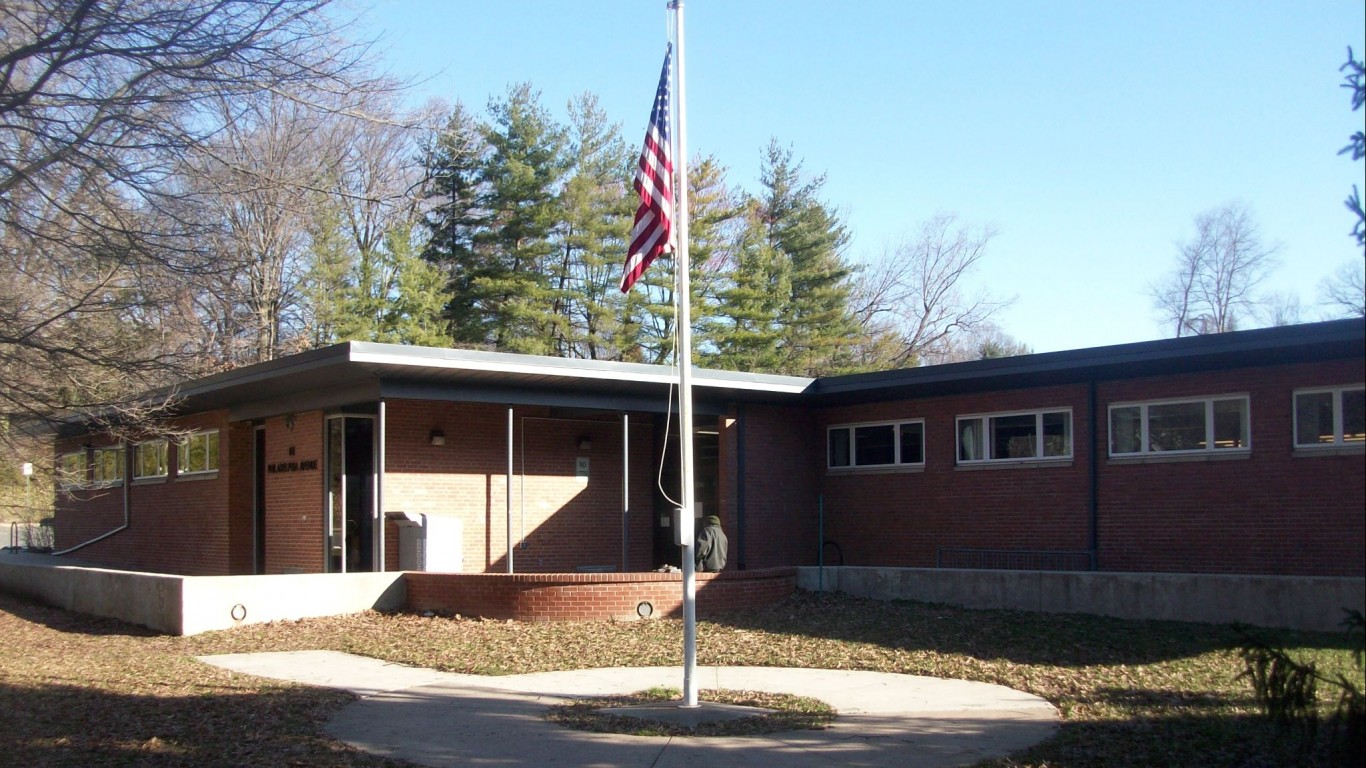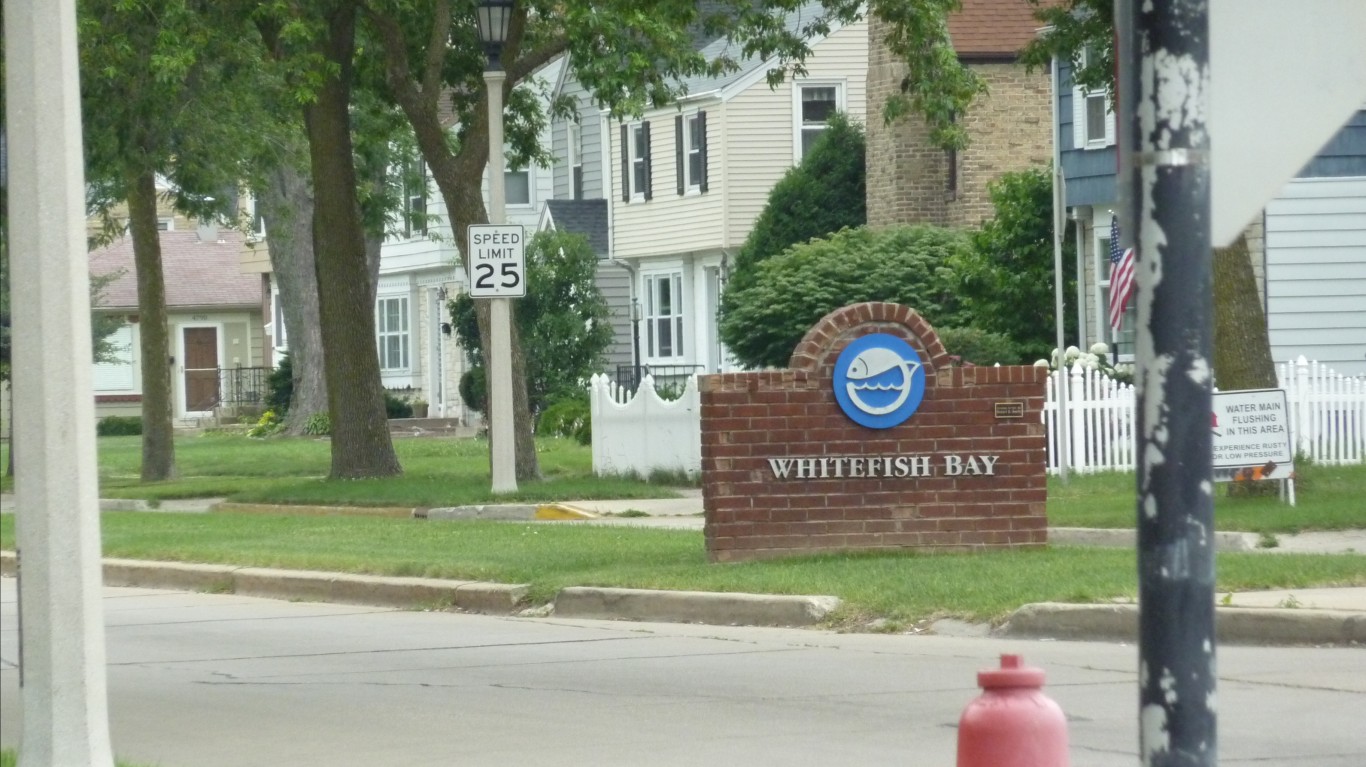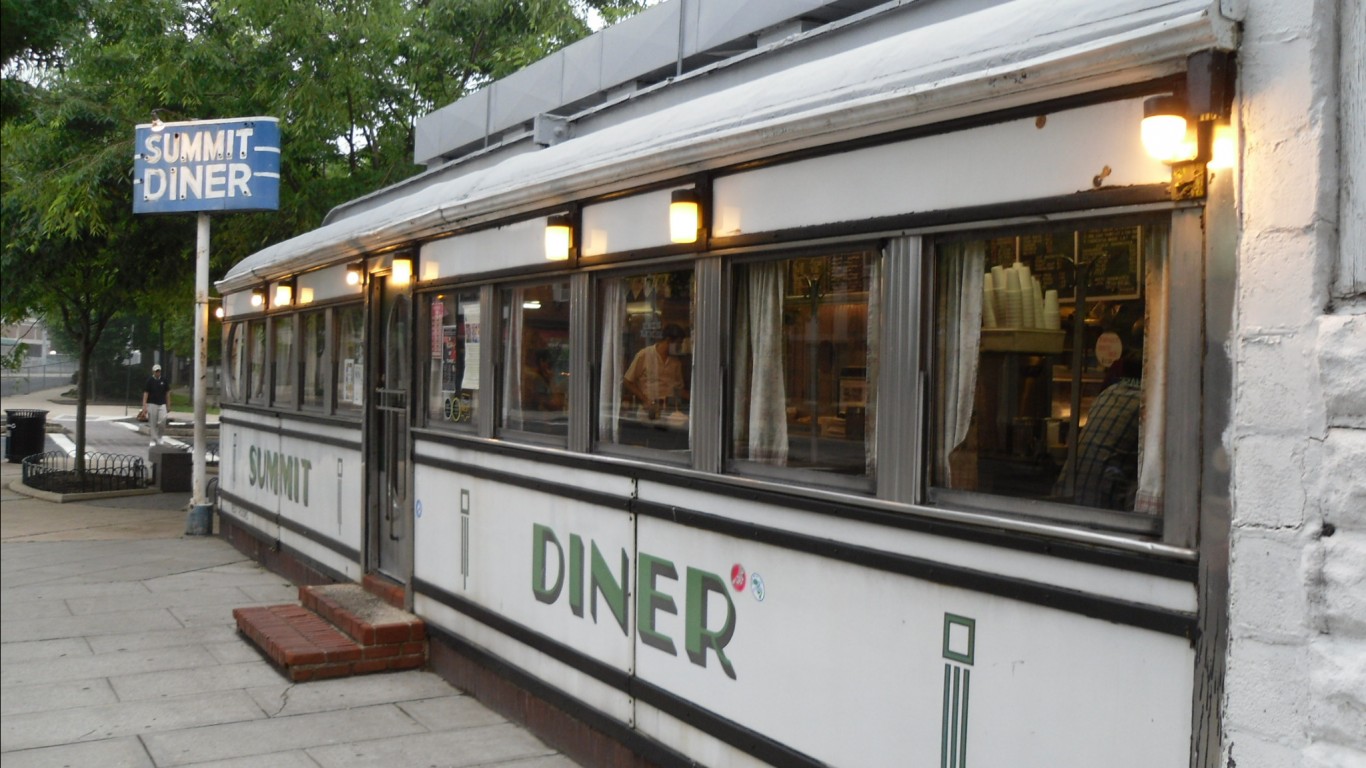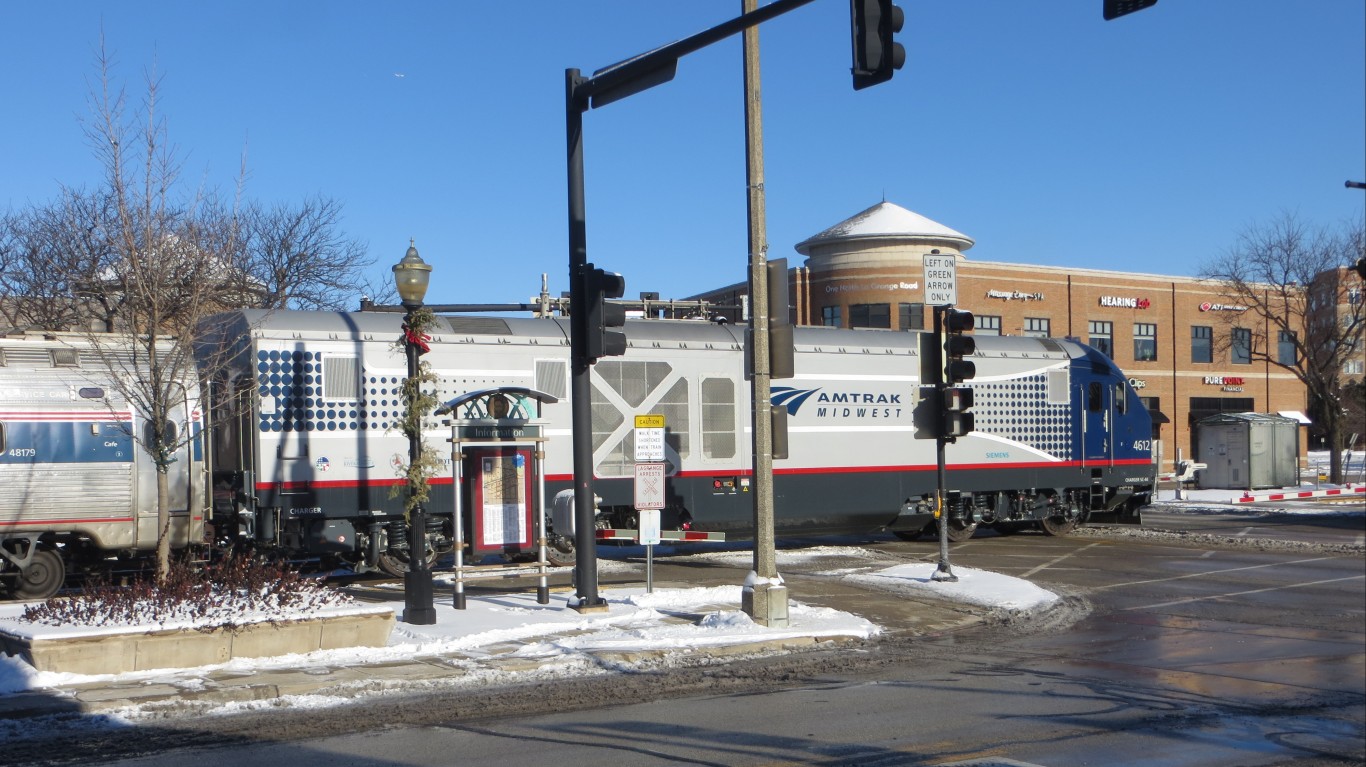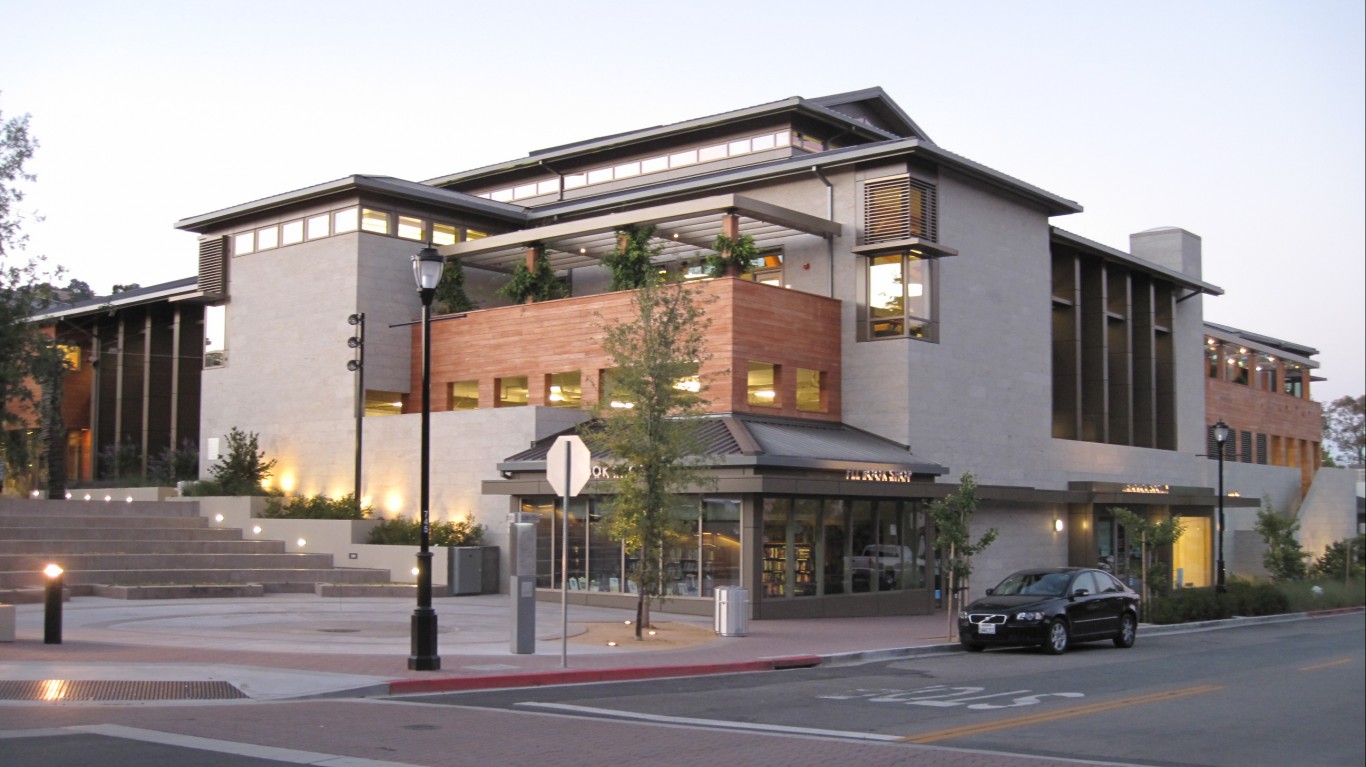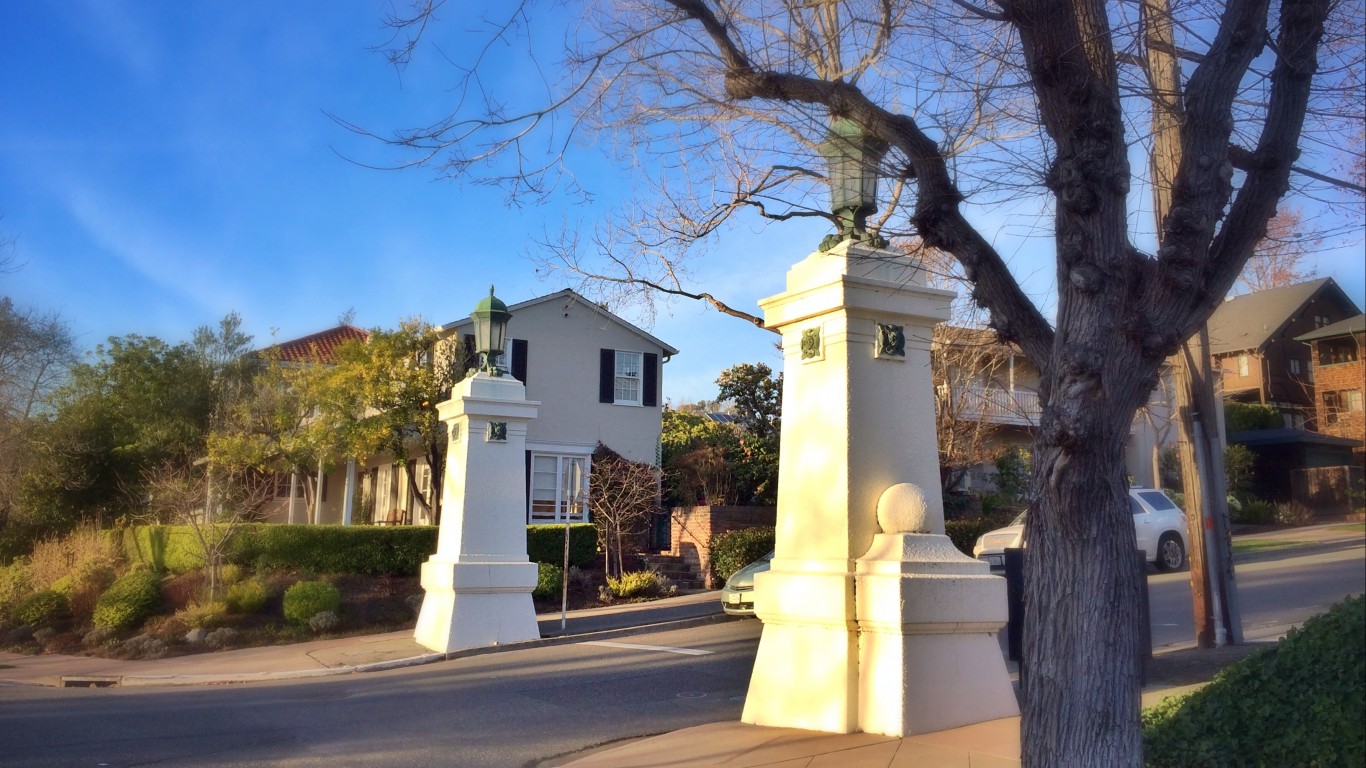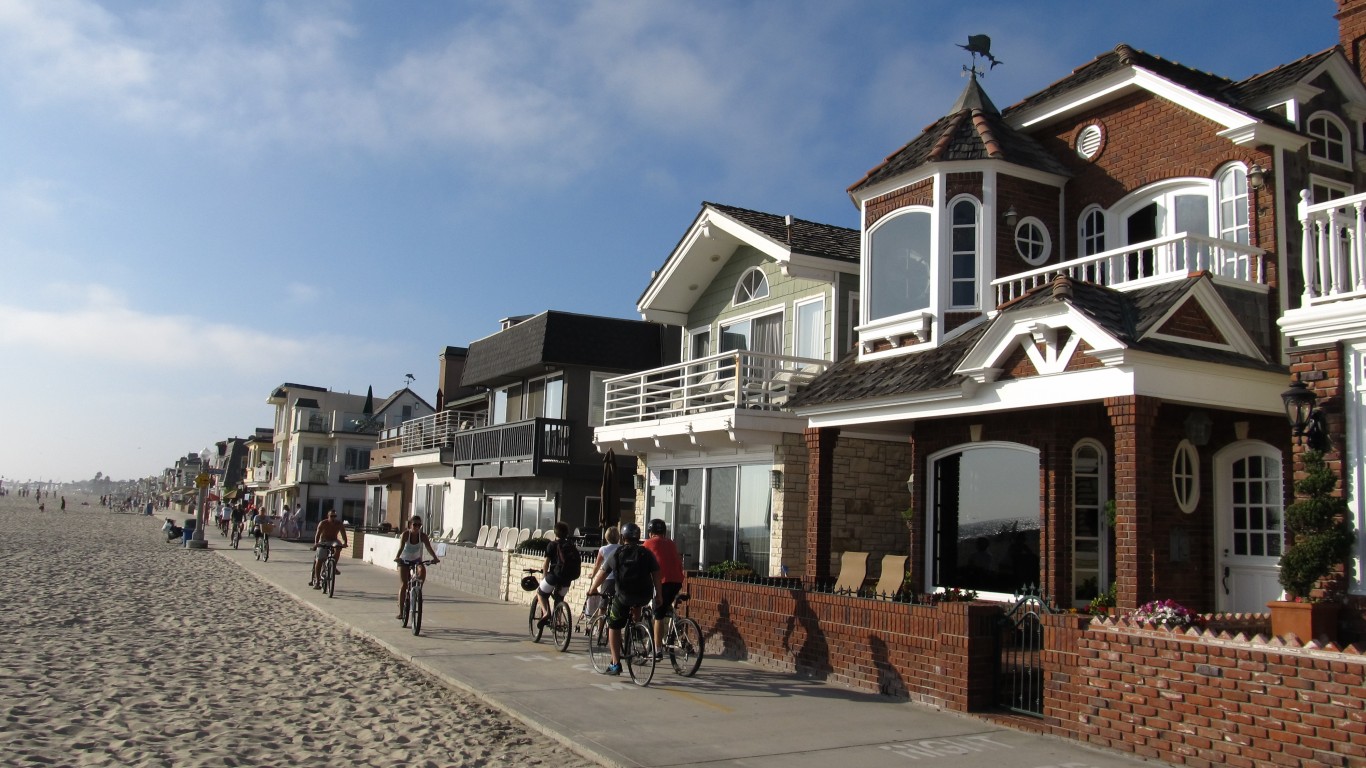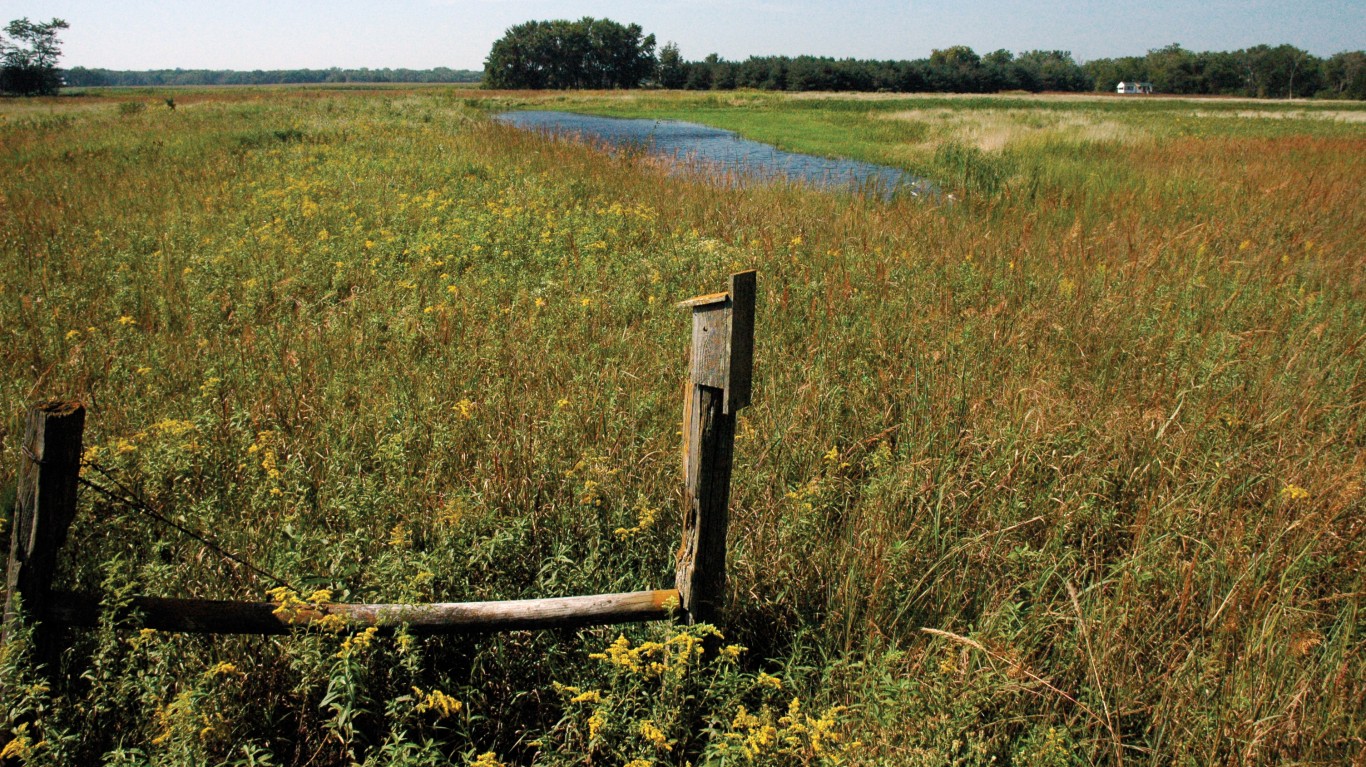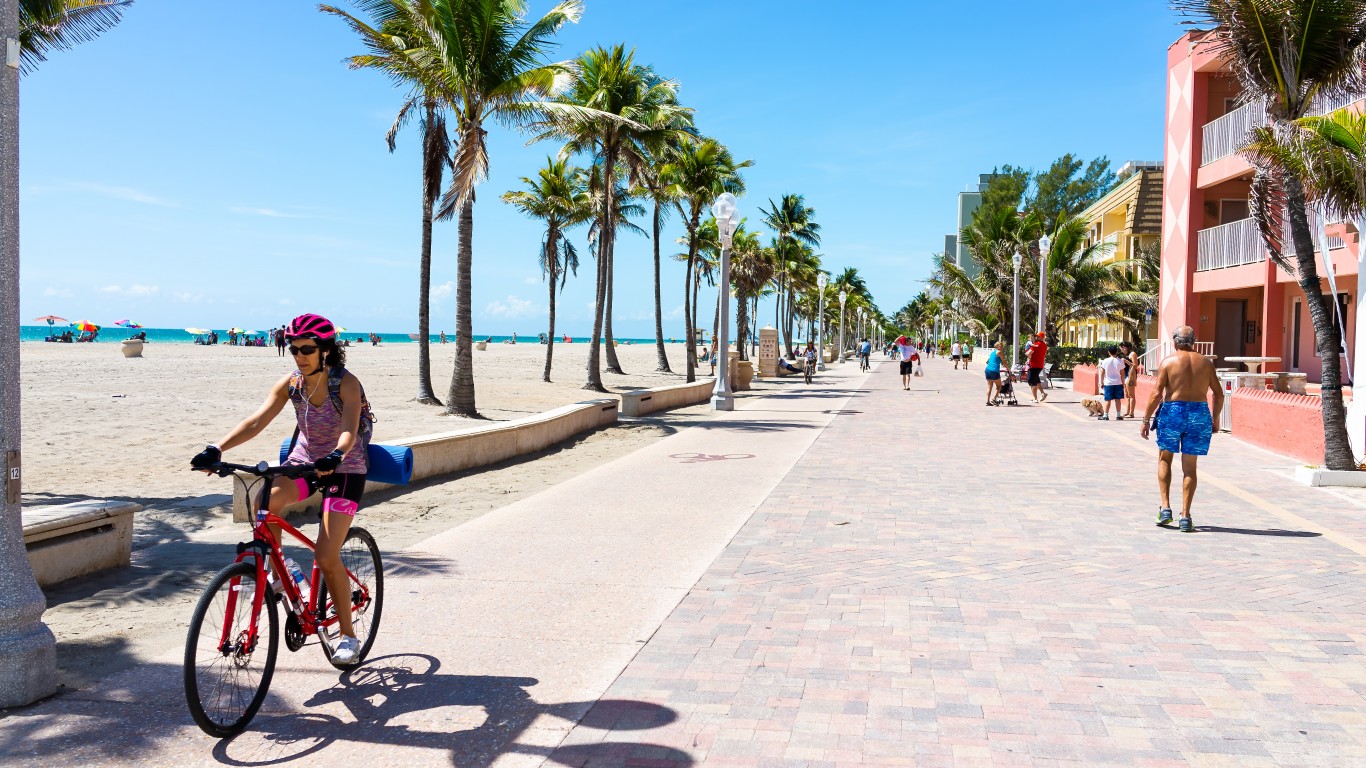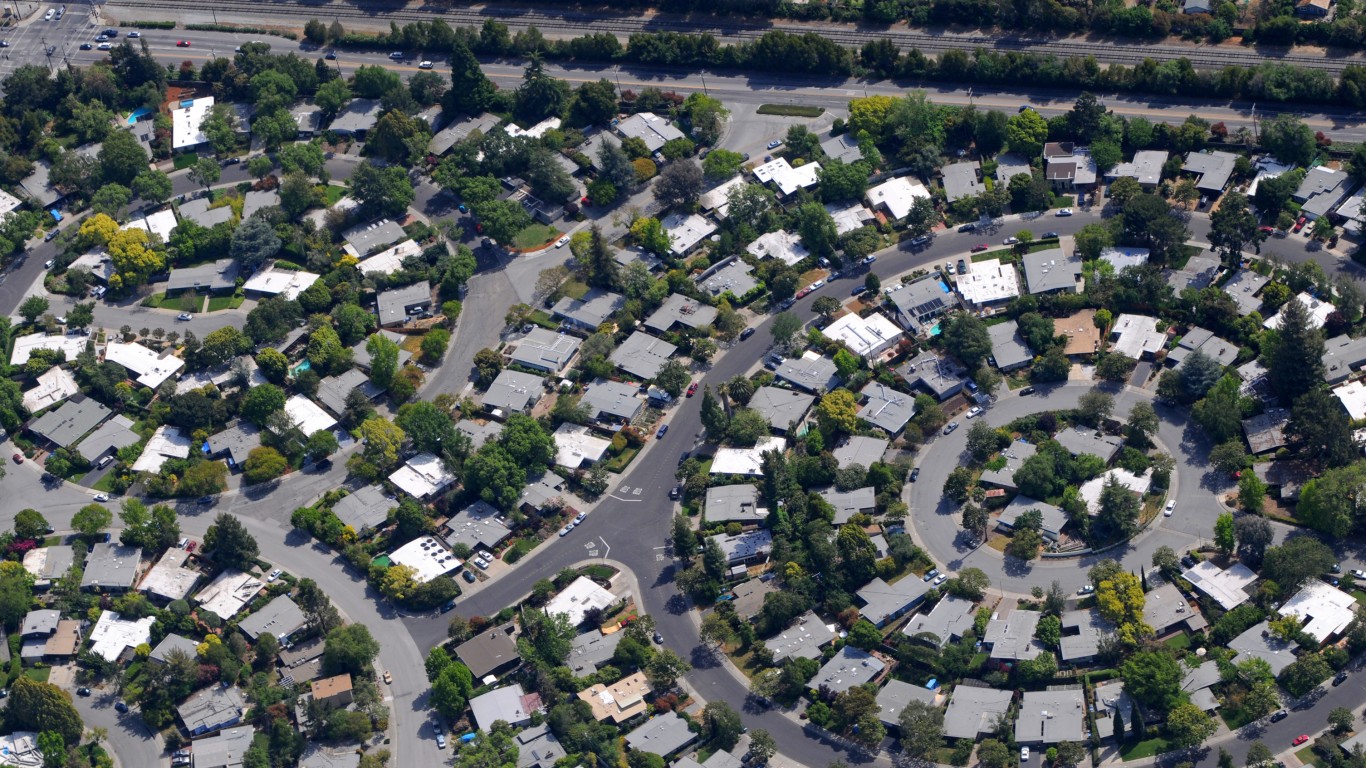
Nearly 30 million Americans moved in the past year — and most of them did so to improve their standard of living in some way. People may choose to move to a more affordable area, where they can buy a bigger home. Or they may consider safety and crime, schools, or the local job market — where we live matters.
Of course, there are nearly 30,000 cities, towns, villages, and neighborhoods in the U.S., and while each has something to offer, only a handful stand out as exceptional, with a wide range of qualities that have almost universal appeal.
Using over two dozen metrics related to affordability, economy, standard of living, and community, 24/7 Wall St. identified the 50 best cities to live in the United States. In order to ensure geographic diversity, we only considered the highest-ranking city in each county. Data came from a number of sources, including the U.S. Census Bureau, the FBI, and the Centers for Disease Control and Prevention.
While household income was not itself a factor in the index, many of the cities and towns on this list are relatively wealthy. This is likely not a coincidence as income is closely tied to several other measures used to create this list, including low crime, low unemployment, and better health outcomes. Here is a look at the richest city in every state.
Population growth can be a sign that an area is attractive to new residents and families, and not surprisingly, the majority of cities on this list are home to more people today than five years ago. A little over half of the cities on this list reported greater population growth than the U.S. as a whole between 2013 and 2018. Here is a list of the fastest growing place in each state.
Click here to see Americas 50 best cities to live.
Click here to see our detailed methodology.
50. Highland Park, Illinois
> Population: 29,628
> 5-yr. population change: -0.6%
> Median household income: $150,269
> 5-yr. avg. unemployment: 3.3%
Highland Park, a small city of about 30,000 in Lake County, Illinois, is one of three cities in the state to rank on this list. The affluent and well-educated neighborhood has a median annual household income of just over $150,000, and nearly three in every four adult residents have a four-year college degree or higher.
Located less than 30 miles from downtown Chicago, Highland Park offers residents easy access to one of the largest cities in the country. Highland Park itself, situated on the shore of Lake Michigan, boasts a public beach and a walkable downtown area with shops, restaurants, parks, and entertainment venues.
[in-text-ad]
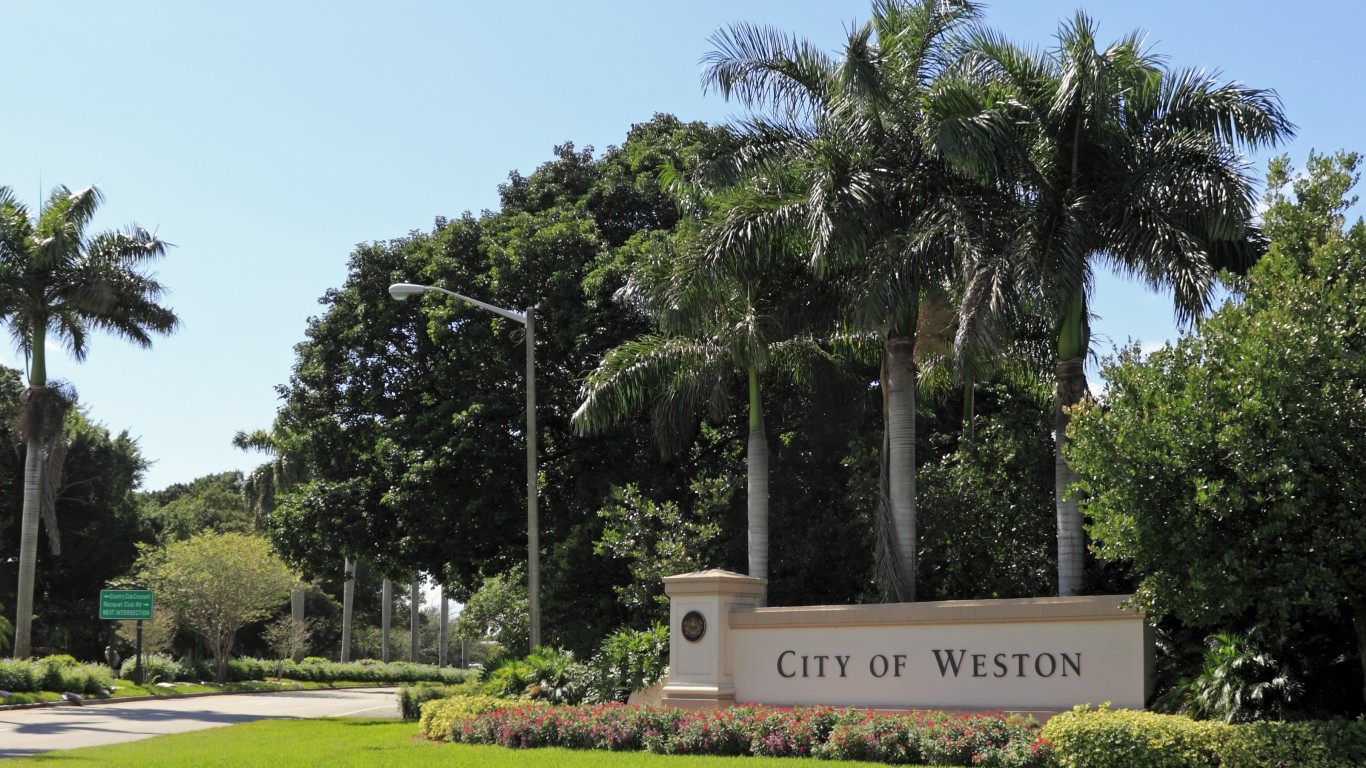
49. Weston, Florida
> Population: 70,614
> 5-yr. population change: +4.5%
> Median household income: $107,908
> 5-yr. avg. unemployment: 4.5%
Weston, Florida, is a largely residential area. The city of about 71,000, which is situated along the Everglades, directly west of Fort Lauderdale, has 15 parks where residents have access to playgrounds, walking paths, bird watching, tennis and basketball courts, and more. The city also offers residents a wide range of shopping and dining options. Like many communities on this list, Weston is also affluent. Most area households earn over $100,000 a year, and one in five households earn over $200,000.
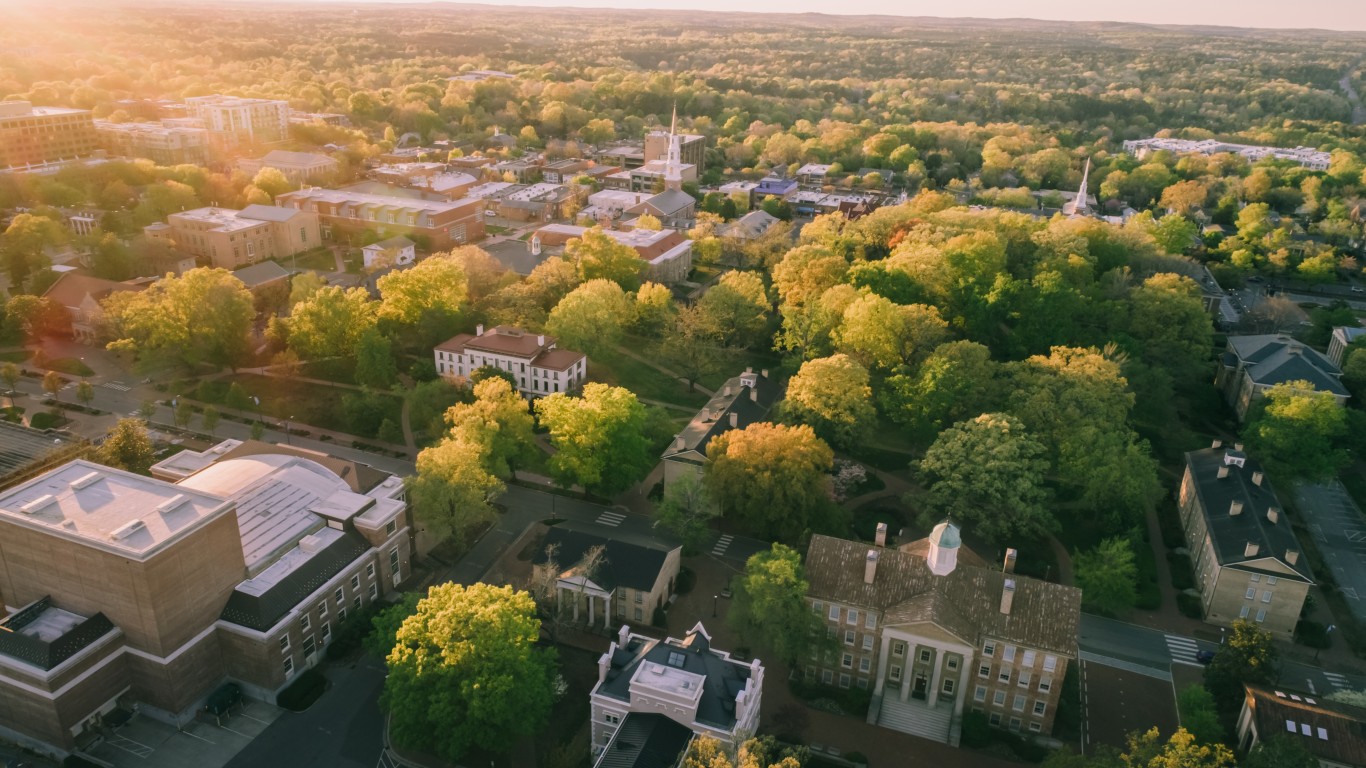
48. Chapel Hill, North Carolina
> Population: 60,998
> 5-yr. population change: +4.5%
> Median household income: $73,614
> 5-yr. avg. unemployment: 3.4%
Home to the University of North Carolina, Chapel Hill is one of several college towns on this list, and the only one in North Carolina. The area has about 140 restaurants, a farmer’s market, nightclubs, college bars, microbreweries, hundreds of retail stores, and a walkable downtown area.
Economic conditions are also relatively strong in Chapel Hill. Most households earn over $73,000 a year — about $11,000 more than the typical American household. Additionally, an average of only 3.4% of the labor force has been unemployed in the last five years, compared to an average of 5.3% nationwide.
47. Lafayette, Colorado
> Population: 28,742
> 5-yr. population change: +11.4%
> Median household income: $83,342
> 5-yr. avg. unemployment: 3.3%
The Denver suburb Lafayette ranks as the fourth best place to live in Colorado and 47th best nationwide. The town features a walkable downtown area complete with a public plaza, shopping, restaurants, a theater, and a museum showcasing the town’s mining history. The community hosts several annual events as well as a weekly farmer’s market. The town has had lower than average unemployment over the last half decade.
Like several other places on this list, Lafayette is growing rapidly. Since 2014, the local population has expanded by 11.4%, more than triple the comparable 3.4% national population growth rate.
[in-text-ad-2]
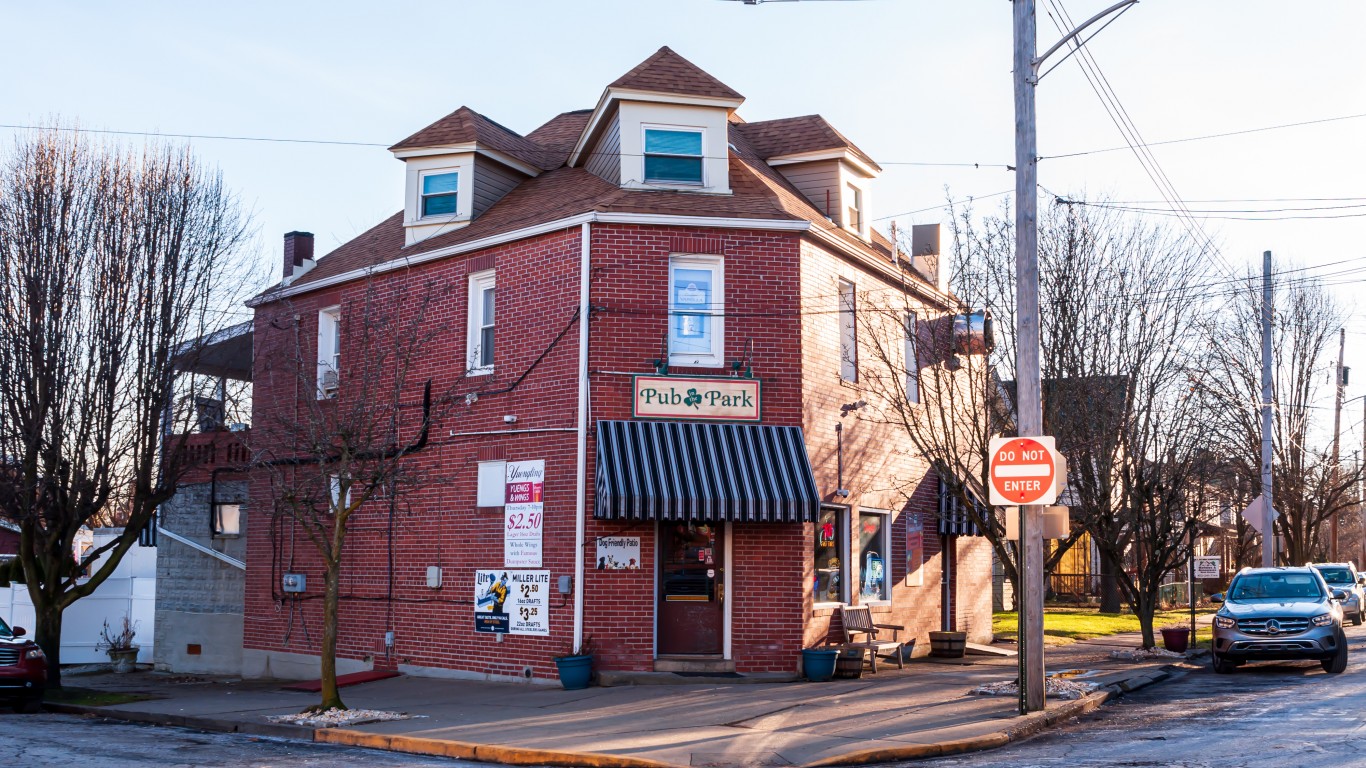
46. Swissvale, Pennsylvania
> Population: 8,760
> 5-yr. population change: -2.3%
> Median household income: $50,067
> 5-yr. avg. unemployment: 4.9%
The Pittsburgh suburb of Swissvale is the only place in Pennsylvania to rank on this list. The area has a weekly farmer’s market and a higher than average concentration of places like bars, restaurants, fitness centers, and libraries.
The most affordable place on this list, the typical home in Swissvale is worth $109,900 — just 2.2 times more than the local median household income of $50,067. Nationwide, the typical home is worth 3.5 times more than the national median household income.

45. Thousand Oaks, California
> Population: 127,873
> 5-yr. population change: -0.2%
> Median household income: $109,378
> 5-yr. avg. unemployment: 4.5%
Thousand Oaks is a city of over 100,000 people about 35 miles west of Los Angeles. The median annual household income of the city is $109,378, much higher than the national median of $62,843. More than 22% of Thousand Oaks households earn $200,000 or more in a year.
The area’s high income level may be due at least in part to the high level of educational attainment in the city — more than half of all adult residents hold at least a bachelor’s degree. College-educated members of the workforce tend to earn higher wages than those without a degree. They are also less likely to live below the poverty line, and just 5.2% of Thousand Oaks residents live in poverty, less than half of the national poverty rate.
[in-text-ad]
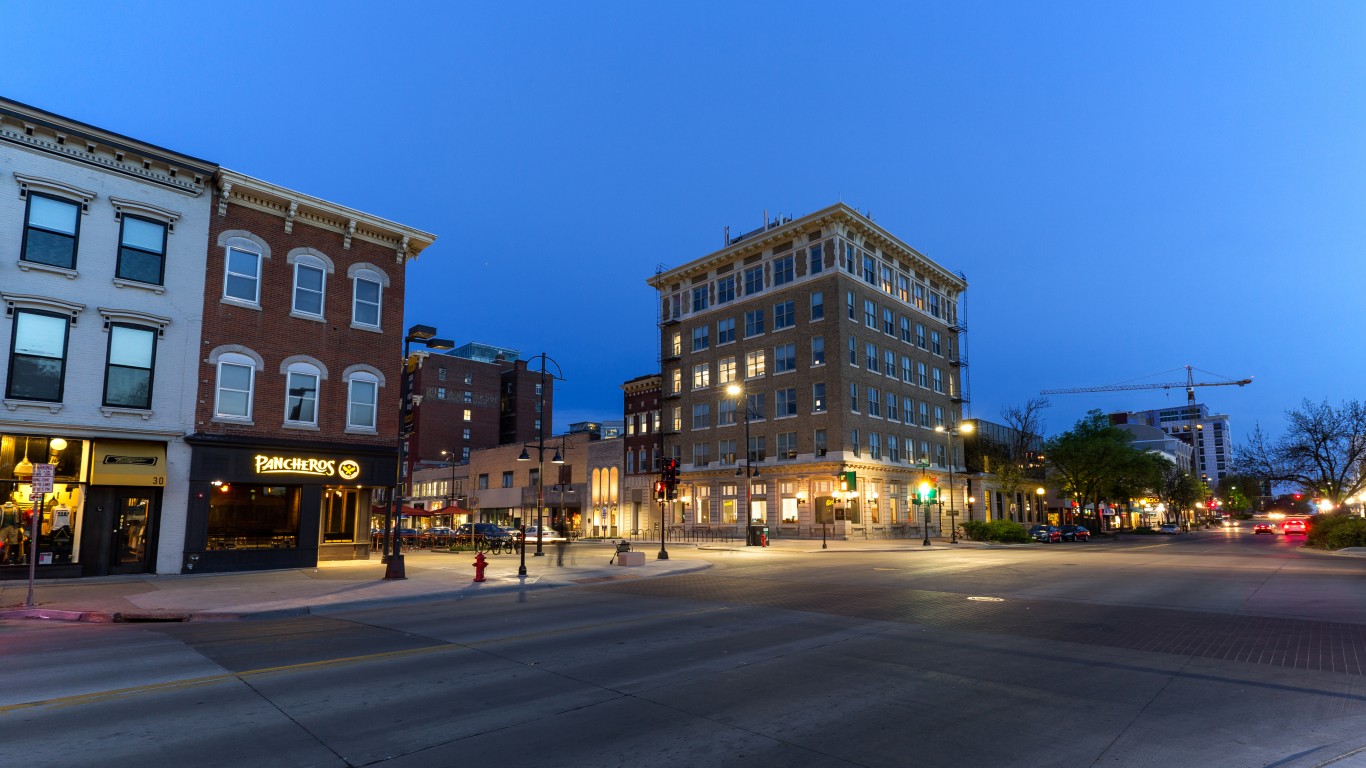
44. Iowa City, Iowa
> Population: 74,950
> 5-yr. population change: +6.2%
> Median household income: $49,075
> 5-yr. avg. unemployment: 4.7%
Commuters in Iowa City are much less likely to have to deal with long drives into work. The average commute time in Iowa City is just 17 minutes, 10 minutes shorter than the typical American commute. More than 28% of commuters in the city do not take a car, opting instead for public transit, walking, or riding a bicycle.
The median annual household income in Iowa City is relatively low, particularly among the cities on this list, at just over $49,000, more than $12,000 lower than the national median. This may be due, at least in part, to the large enrollment at the University of Iowa, as most of the nearly 32,000 students likely do not have full-time jobs.
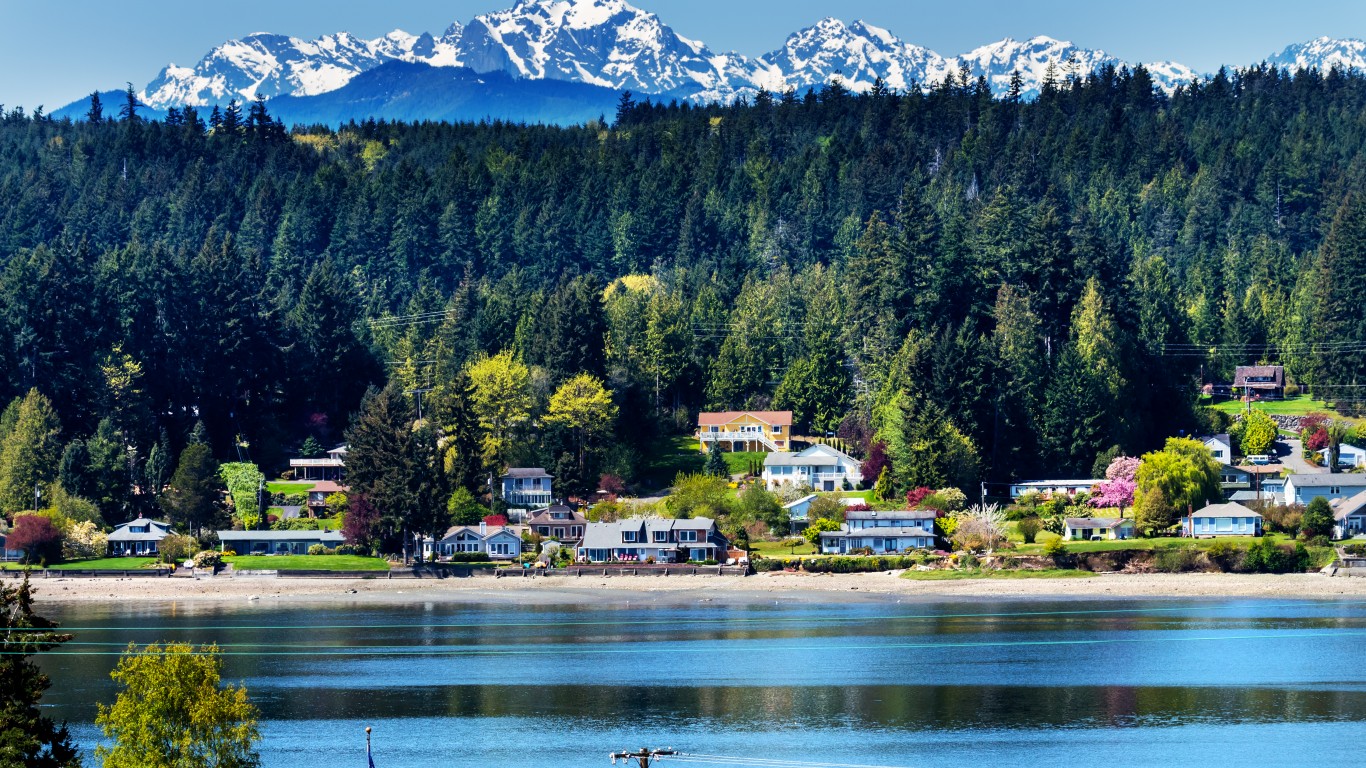
43. Bainbridge Island, Washington
> Population: 24,486
> 5-yr. population change: +5.5%
> Median household income: $117,990
> 5-yr. avg. unemployment: 3.1%
Bainbridge Island is an affluent community just west of Seattle, across Elliott Bay, and is accessible by ferry. It has several parks, nature preserves, and golf courses.
The population of Bainbridge Island is one of the most highly educated in the country, with 72% of adult residents holding at least a bachelor’s degree, compared to 32.1% of American adults. People with higher levels of educational attainment are more likely to have higher incomes, and the typical household in Bainbridge Island earns nearly $118,000 per year.
42. Downers Grove, Illinois
> Population: 49,470
> 5-yr. population change: +0.2%
> Median household income: $94,893
> 5-yr. avg. unemployment: 4.1%
Downers Grove is located about 20 miles west of Chicago. Being this close to a major city has advantages, like access to public transit. Some 11.8% of Downers Grove workers commute via public transit, more than double the nationwide rate of public transit usage.
The city is fairly affluent, with most households earning over $94,000 annually, and 16.2% of households earning over $200,000 per year — more than double the nationwide share of 7.7%. Just 5.0% of residents live in poverty, less than half the U.S. poverty rate of 13.4%.
[in-text-ad-2]
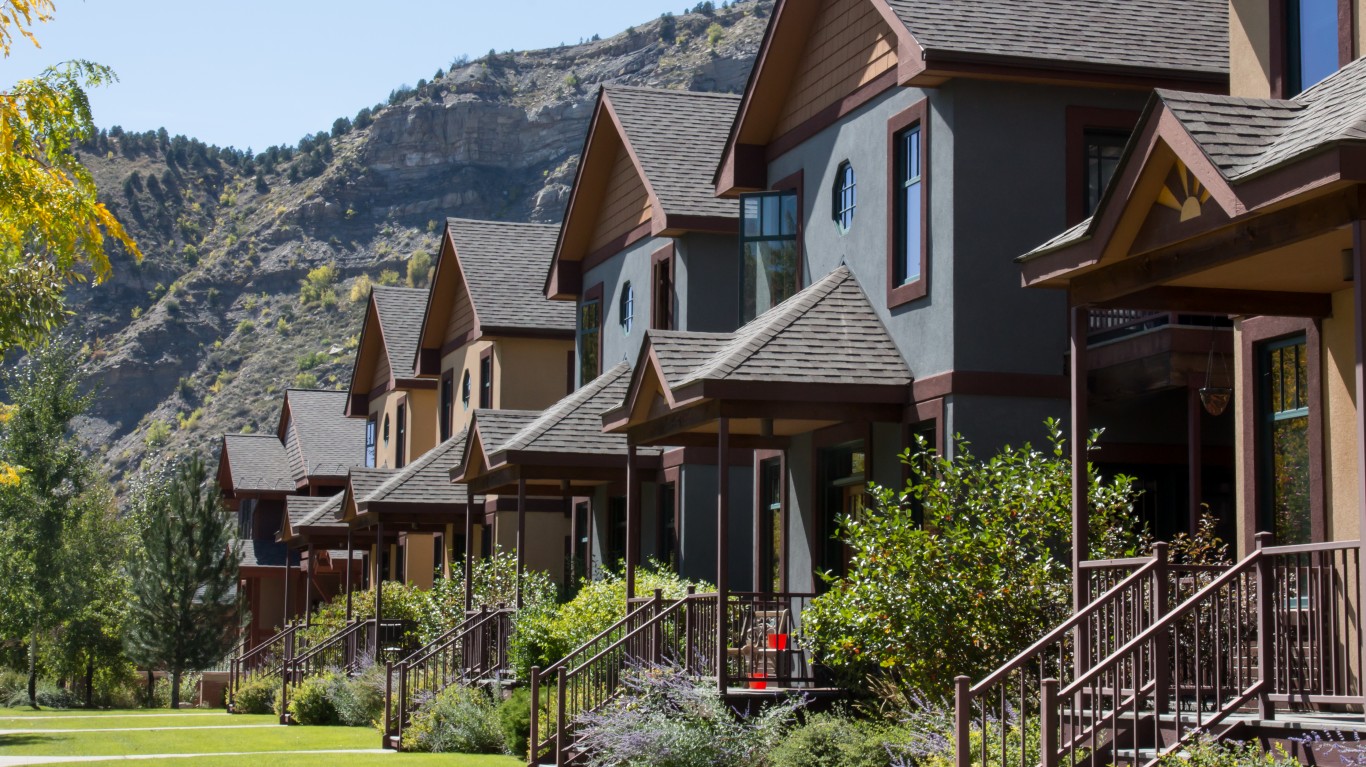
41. Durango, Colorado
> Population: 18,588
> 5-yr. population change: +7.6%
> Median household income: $66,160
> 5-yr. avg. unemployment: 4.8%
Durango, a city of about 19,000 residents in southern Colorado is one of four places in the state to rank on this list. The city is home to a number of art galleries and museums, three golf courses, and an active nightlife. Residents also have access to places to ski, hike, mountain bike, and raft.
Real estate taxes are relatively low in Durango, but housing is expensive. The typical area home is worth about $463,700, more than twice the median home value nationwide of $217,500. Housing prices have likely been driven up by the area’s popularity. In the last five years, Durango’s population climbed by 7.6%. The U.S. population grew by just 3.4% over the same period.
40. Hawthorne, New Jersey
> Population: 18,784
> 5-yr. population change: -0.8%
> Median household income: $97,692
> 5-yr. avg. unemployment: 3.6%
Hawthorne is one of five New Jersey cities to rank among America’s 50 best places to live. Less than an hour drive from Midtown Manhattan, Hawthorne residents have access to the economic opportunities available in New York City. The city’s median household income is over $97,000, as compared to the $62,843 median nationwide.
Hawthorne residents tend to lead a fairly healthy lifestyle. More than 83% of adult residents get at least some leisure time physical activity, compared to 76.4% of all U.S. adults. Just 21.7% of residents 18 and over are considered obese, compared to 29% of all American adults.
[in-text-ad]
39. Clayton, Missouri
> Population: 16,588
> 5-yr. population change: +4.2%
> Median household income: $107,596
> 5-yr. avg. unemployment: 2.2%
Clayton is a small town of just over 16,000 west of St. Louis. City residents tend to be prosperous. The typical household earns over $107,000 annually, and more than 30% of households have an income of over $200,000, a far larger share than households nationwide. Residents also tend to be well educated, with 77.7% of adults in Clayton holding at least a bachelor’s degree, which is more than double the 32.1% national bachelor’s degree attainment rate.
The area’s high incomes are due in part to Clayton’s strong job market. The city’s five-year average unemployment as of 2019 was just 2.2%, well below the national 5.3% average unemployment rate during that same stretch of time.

38. Middleton, Wisconsin
> Population: 19,487
> 5-yr. population change: +7.2%
> Median household income: $76,011
> 5-yr. avg. unemployment: 2.5%
Middleton, Wisconsin, a small city of about 20,000 in Dane County, less than 10 miles from Madison, is one of two places in the state to rank on this list. The area boasts over 50 parks and natural areas that are well suited to activities such as biking and cross country skiing. Middleton also has several museums, two farmers markets, over 60 retail shops, 80 restaurants, and an award winning micro-brewery.
The city has also historically had a strong job market. An average of just 2.5% of the local labor force has been unemployed in the last five years, less than half the average 5.3% national jobless rate during the same time. With a healthy economy and plenty of recreational amenities, Middleton is growing fast. In the last five years, the number of people living in the area has jumped by 7.2% — more than double the 3.4% national population growth.
37. Glenwood Springs, Colorado
> Population: 9,915
> 5-yr. population change: +2.6%
> Median household income: $66,693
> 5-yr. avg. unemployment: 3.1%
Glenwood Springs, Colorado, is a resort community located in the Rocky Mountains about 160 miles west of Denver. One of the best places to live in the state, the area is home to a far higher than average concentration of places like restaurants, hotels, and movie theaters per capita. Residents also have access to places for outdoor recreation like hiking, mountain biking, climbing, golfing, and snow sports.
Though Glenwood Springs is more isolated than the vast majority of places on this list — and not within commuting distance of a major city — there are still plenty of employment opportunities. Over the last five years, just 3.1% of the labor force has been unemployed, compared to the 5.3% comparable national average jobless rate.
[in-text-ad-2]

36. Petaluma, California
> Population: 60,767
> 5-yr. population change: +3.1%
> Median household income: $91,528
> 5-yr. avg. unemployment: 4.0%
Petaluma, California, is one of several cities in the San Francisco Bay area to rank on this list. Residents have easy access to San Francisco and California’s wine country, and the city itself — one of the oldest in California — has a high concentration of restaurants, gyms, parks, museums, and movie theaters per capita.
Petaluma is a relatively wealthy city. The typical household in the area earns $91,528 a year, while the typical American household earns $62,843. Additionally, 14.4% of local households earn over $200,000 a year, nearly double the comparable 7.7% share of households nationwide.
35. Scotts Valley, California
> Population: 11,863
> 5-yr. population change: +1.3%
> Median household income: $108,289
> 5-yr. avg. unemployment: 3.6%
Scotts Valley is a small California city, located near the redwood forests of the Santa Cruz Mountains, about 70 miles south of San Francisco.
Though Scotts Valley is a relatively expensive place to live, with most homes valued at over $815,000, there are plenty of job opportunities, and wages tend to be relatively high. Over the last five years, just 3.6% of the labor force was unemployed, compared to an average of 5.3% jobless rate nationwide. Additionally, most households in the city earn over $108,000 per year, while nationwide, most households earn less than $63,000.
[in-text-ad]
34. Lone Tree, Colorado
> Population: 12,923
> 5-yr. population change: +4.8%
> Median household income: $120,392
> 5-yr. avg. unemployment: 2.8%
Lone Tree, Colorado, is a city of about 13,000 residents in the Denver metropolitan area. The city is home to several master planned communities as well as Park Meadows Mall — the largest shopping mall in the state. Lone Tree also offers residents about 200 restaurants and dining establishments and 60 attractions and entertainment destinations.
Like many places on this list, Lone Tree’s population is relatively wealthy and well educated. The typical area household earns $120,392 a year, nearly double the income of the typical American household, and 70% of area adults have a bachelor’s degree or higher, compared to about 33% of U.S. adults.

33. Monterey, California
> Population: 28,352
> 5-yr. population change: +1.1%
> Median household income: $80,694
> 5-yr. avg. unemployment: 3.0%
Located near Big Sur and the Pebble Beach golf course, Monterey, California, is both a popular tourist destination and one of the best places to live in the United States. Monterey is a relatively walkable community, as 12.6% of commuters living in the area walk to work.
Monterey also has a relatively strong job market. An average of only 3.0% of the local labor force was unemployed in the last five years, well below the comparable average of 5.3% nationwide.
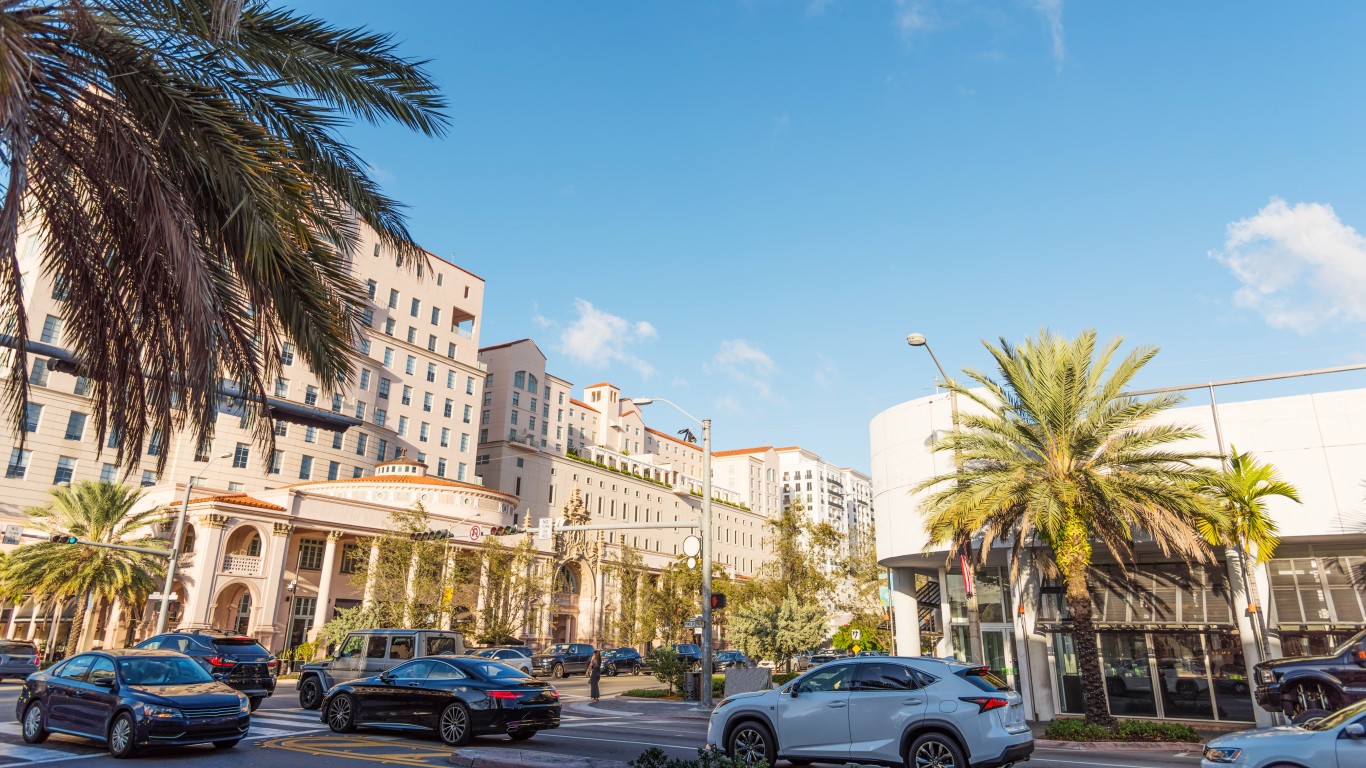
32. Coral Gables, Florida
> Population: 50,226
> 5-yr. population change: +1.8%
> Median household income: $100,843
> 5-yr. avg. unemployment: 3.2%
Coral Gables is a city of about 50,000 located in the Miami metro area. The city, founded in the 1920s, is notable for its physical beauty, distinguished by tree-lined, canopied streets, parks, and waterfront views. Residents have access to a number of shopping and dining establishments along the city’s “Miracle Mile.”
Additionally, Coral Gables residents are a short drive from Miami and can benefit from jobs and attractions in one of the largest cities in Florida without sharing many of the drawbacks of living in a large metropolis.
[in-text-ad-2]
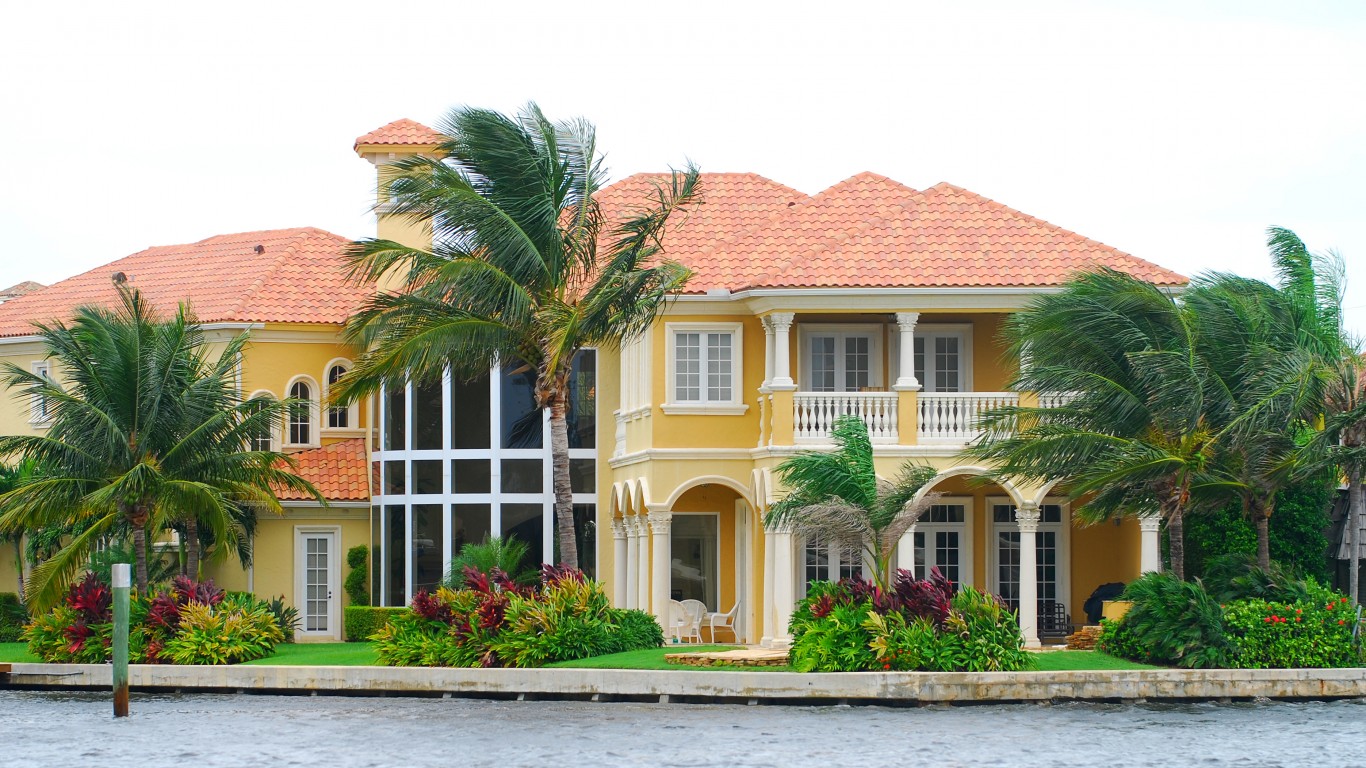
31. Palm Beach, Florida
> Population: 8,723
> 5-yr. population change: +4.5%
> Median household income: $141,348
> 5-yr. avg. unemployment: 2.3%
Palm Beach is a wealthy town located on a barrier island along Florida’s Atlantic coast. Most area households earn over $141,000 a year, and the typical area home is worth nearly $1.2 million. The town offers residents access to beaches, golf courses, outdoor shopping malls, and residents are within short distance of Everglades National Park. Boasting a warm climate typical of south Florida, Palm Beach is a popular destination for retirees. Only 30.7% of the local population is employed, compared to about 48% of the total U.S. population.
Still, for those who are working, the job market in Palm Beach is strong. Over the last five years, an average of only 2.3% of the labor force was unemployed, less than half the comparable 5.3% U.S. average unemployment rate.
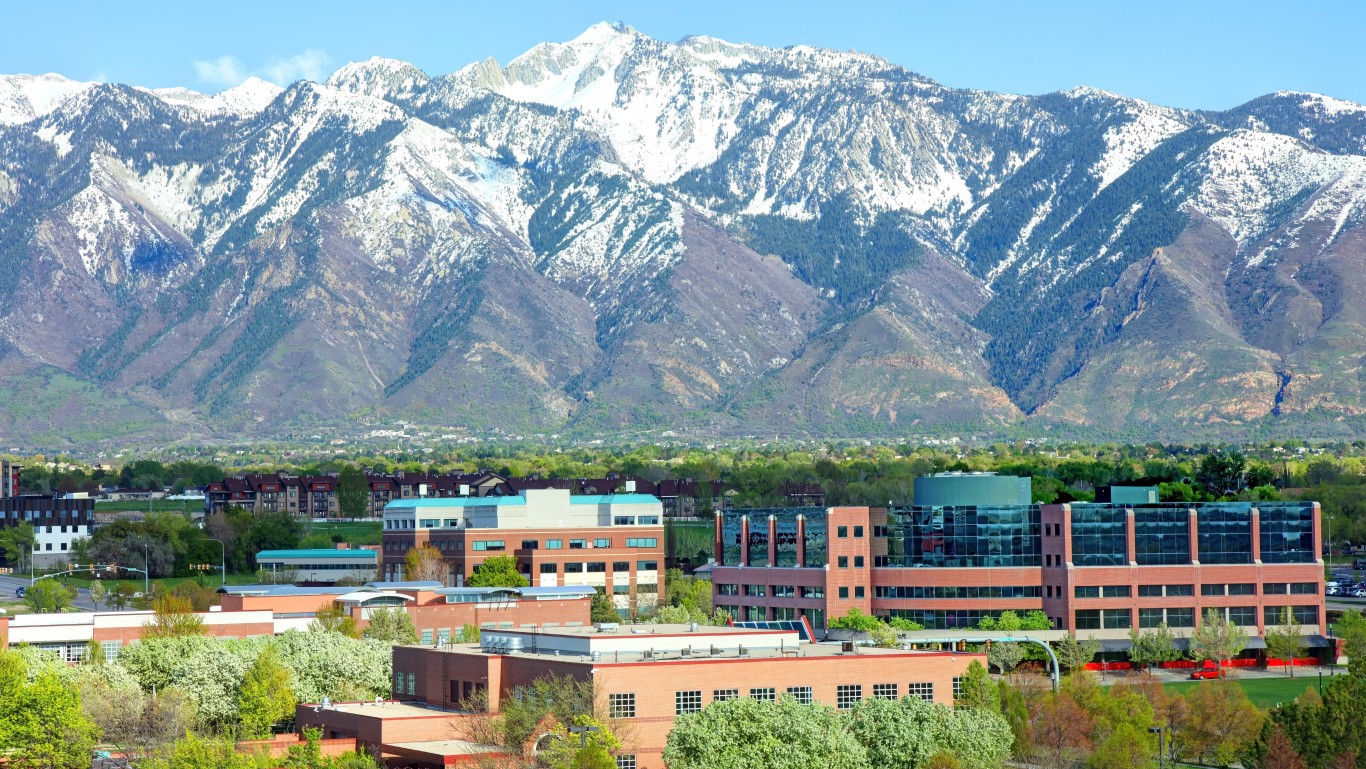
30. Sandy, Utah
> Population: 96,127
> 5-yr. population change: +7.4%
> Median household income: $94,018
> 5-yr. avg. unemployment: 2.8%
Sandy, Utah, is the only place in the state to rank on this list. The city, located less than 20 miles south of Salt Lake City, has a relatively strong job market. Over the last five years, an average of only 2.8% of the labor force in Sandy has been unemployed, well below the comparable 5.3% national average jobless rate. Over the same period, the city has added thousands of jobs.
Sandy offers residents access to over 30 parks and a downtown area with a range of shopping and dining options as well as museums and entertainment venues.
[in-text-ad]
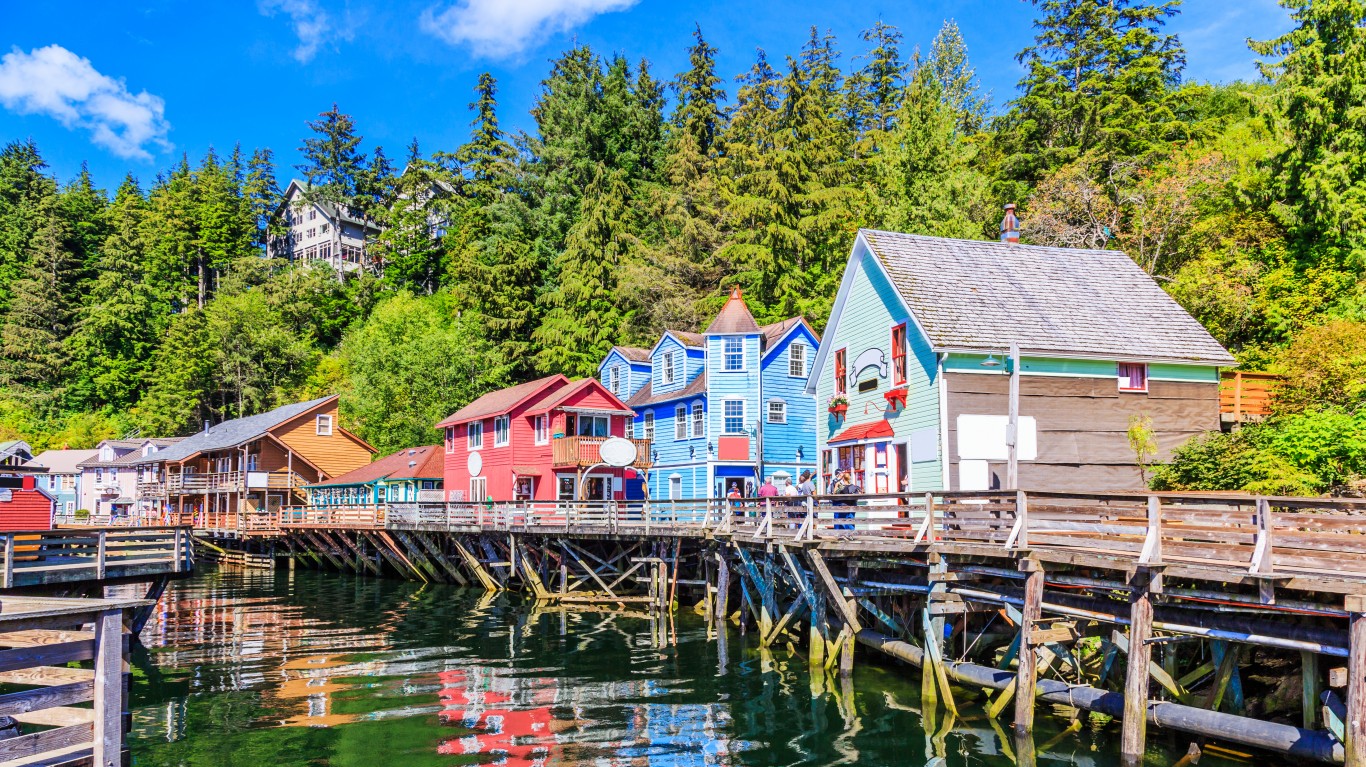
29. Ketchikan, Alaska
> Population: 8,228
> 5-yr. population change: +0.7%
> Median household income: $61,419
> 5-yr. avg. unemployment: 7.0%
Ketchikan is a small city in southern Alaska and the only place in the state to rank on this list. Ideal for outdoor types, the area is home to a wide range of wildlife, including black bears, wolves, bald eagles, and over 100 species of migrating birds. A coastal city, Ketchikan and the surrounding waters are also home to Orca and humpback whales, sea lions, seals, otters, and porpoises. The city also has a far higher than average concentration of places like restaurants, bars, and hotels.
28. Takoma Park, Maryland
> Population: 17,672
> 5-yr. population change: +2.1%
> Median household income: $84,591
> 5-yr. avg. unemployment: 5.6%
Takoma Park, Maryland, is a Washington D.C. suburb with a unique identity that has earned it the nickname “The Berkeley of the East.” The city has its own peace delegation, an annual folk festival, and a local voting age of 16. The city is walkable, and is in close proximity to reliable public transit. According to a recent survey, about 9 in every 10 local residents say that overall quality of life in Takoma Park is either excellent or good.
As is often the case among the cities and towns on this list, Takoma Park is a relatively expensive place to live. Most homes in the area are worth over $580,000, well more than double the median home value nationwide of $217,500.
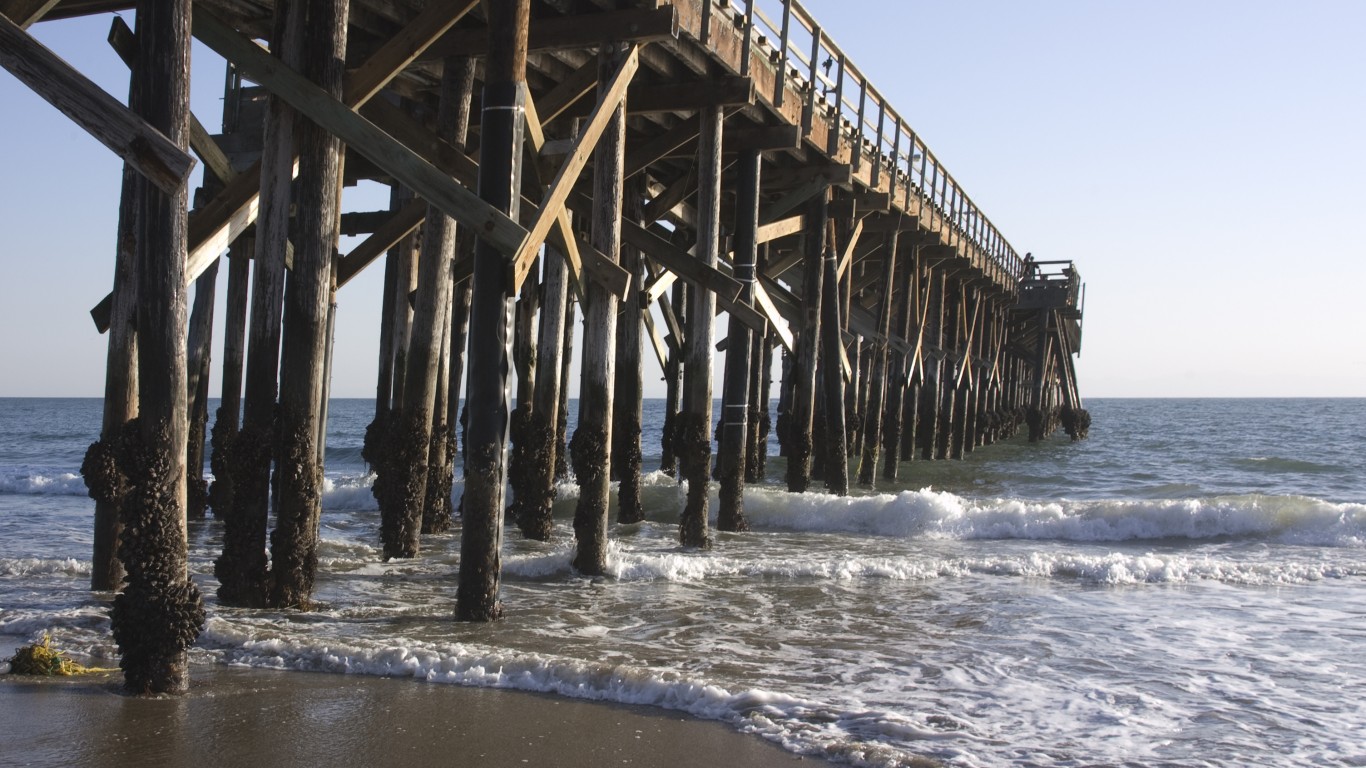
27. Goleta, California
> Population: 30,975
> 5-yr. population change: +2.1%
> Median household income: $98,005
> 5-yr. avg. unemployment: 5.5%
Goleta is a coastal city in southern California with a population of about 31,000. Goleta is also home to several beaches, parks, golf courses, and a high per capita concentration of restaurants, hotels, museums, and movie theaters.
Many of the best places to live are home to wealthy, well-educated populations — and Goleta is no exception. Most households in the area earn over $98,000 a year, and nearly half of the local adult population has a bachelor’s degree or higher. Nationwide, most households earn less than $63,000 and about 33% of adults have a bachelor’s degree.
[in-text-ad-2]
26. Whitefish Bay, Wisconsin
> Population: 13,972
> 5-yr. population change: -1.1%
> Median household income: $124,397
> 5-yr. avg. unemployment: 2.2%
Along with Middleton, Whitefish Bay is one of two Wisconsin cities to rank among the 50 best places to live. The village is a Milwaukee suburb located on the shore of Lake Michigan, and favorable quality of life in Whitefish Bay is partially the result of a strong job market. The area’s average unemployment rate over the last five years stands at just 2.2% â less than half the comparable national rate of 5.3%.
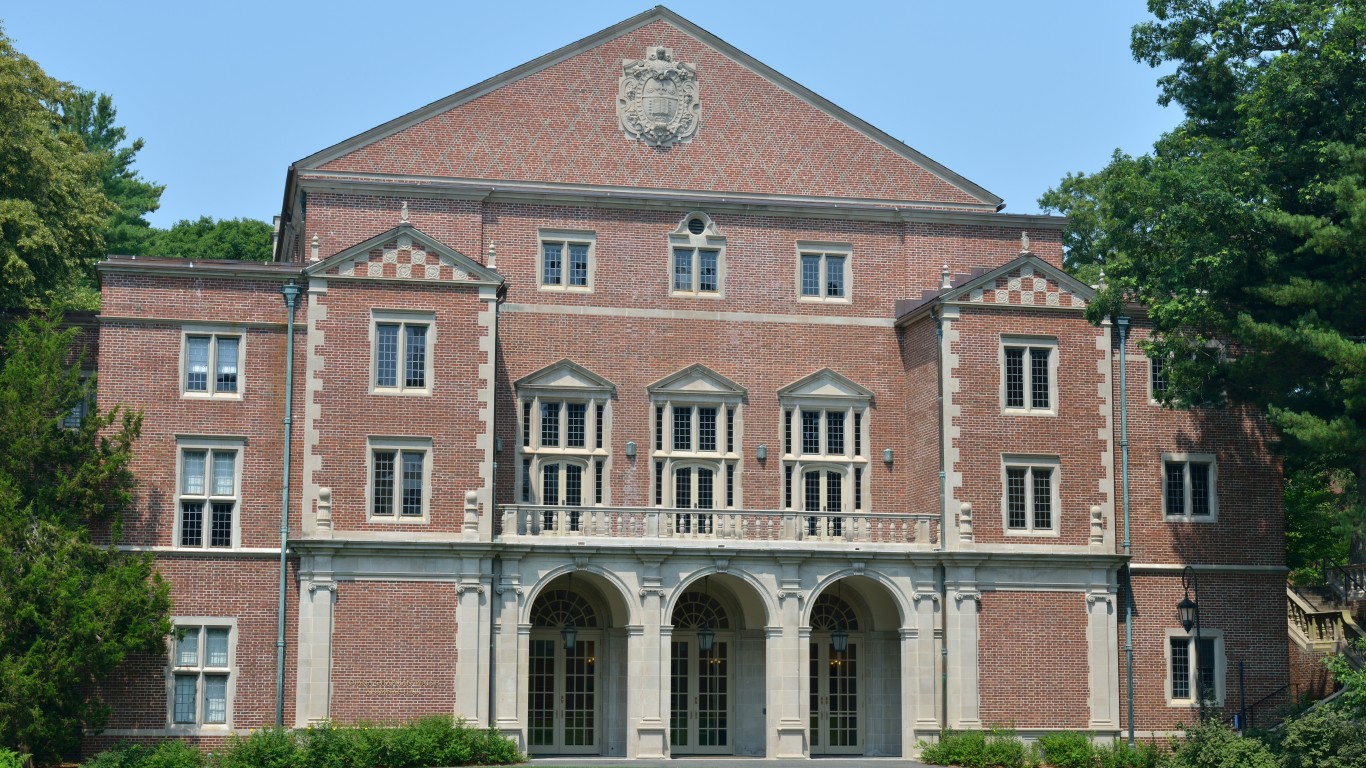
25. Wellesley, Massachusetts
> Population: 28,747
> 5-yr. population change: -0.4%
> Median household income: $197,132
> 5-yr. avg. unemployment: 4.6%
Wellesley, an unincorporated community in the Boston metro area, is one of three places in Massachusetts to rank on this list. Home to both Wellesley College and Babson College, it is also one of several college towns on this list.
An affluent and well-educated community, Wellesley’s median household income stands at close to $200,000. Additionally, nearly 84% of the local 25 and older residents have a bachelor’s degree or higher.
[in-text-ad]

24. Rye, New York
> Population: 15,820
> 5-yr. population change: -0.5%
> Median household income: $192,688
> 5-yr. avg. unemployment: 4.1%
Rye, a small city in Westchester County is one of only two cities in New York state to rank on this list. Located along Long Island Sound, Rye boasts a boat basin that offers residents access to a beach, hundreds of boat slips and racks as well as winter storage, parks, and a walkable downtown area with a number of shopping and dining options.
Residents also benefit from their home town’s close proximity to New York City, and all the entertainment options and employment opportunities available in the area. The area’s location and amenities have driven up real estate values. Most homes in Rye are worth over $1.3 million.
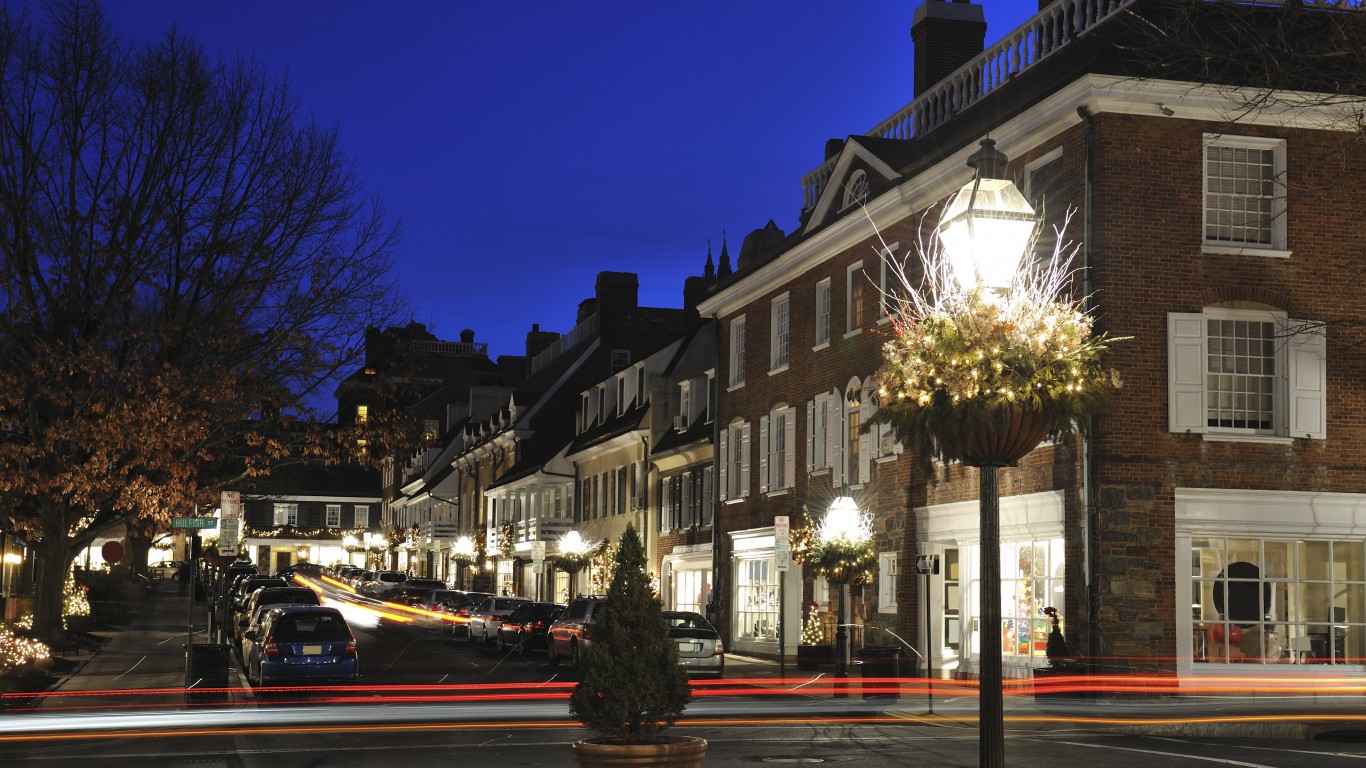
23. Princeton, New Jersey
> Population: 31,000
> 5-yr. population change: +7.1%
> Median household income: $137,672
> 5-yr. avg. unemployment: 3.3%
Princeton, located in central New Jersey and home to Princeton University, ranks as the fourth best place to live in the Garden State. As is the case with several other college towns on this list, Princeton has a well-educated population and a strong job market. Over 80% of adults in the city have a bachelor’s degree, and an average of only 3.3% of the labor force has been unemployed in the last five years — compared to the 32.1% and 5.3% national figures, respectively.
Princeton residents benefit from public transit lines that offer easy access to New York City and Philadelphia. The city also has a local farmers market as well as restaurants that offer cuisines from around the world. The small city also has a number of parks that offer basketball and tennis courts, baseball and soccer fields, birding, and walking trails.
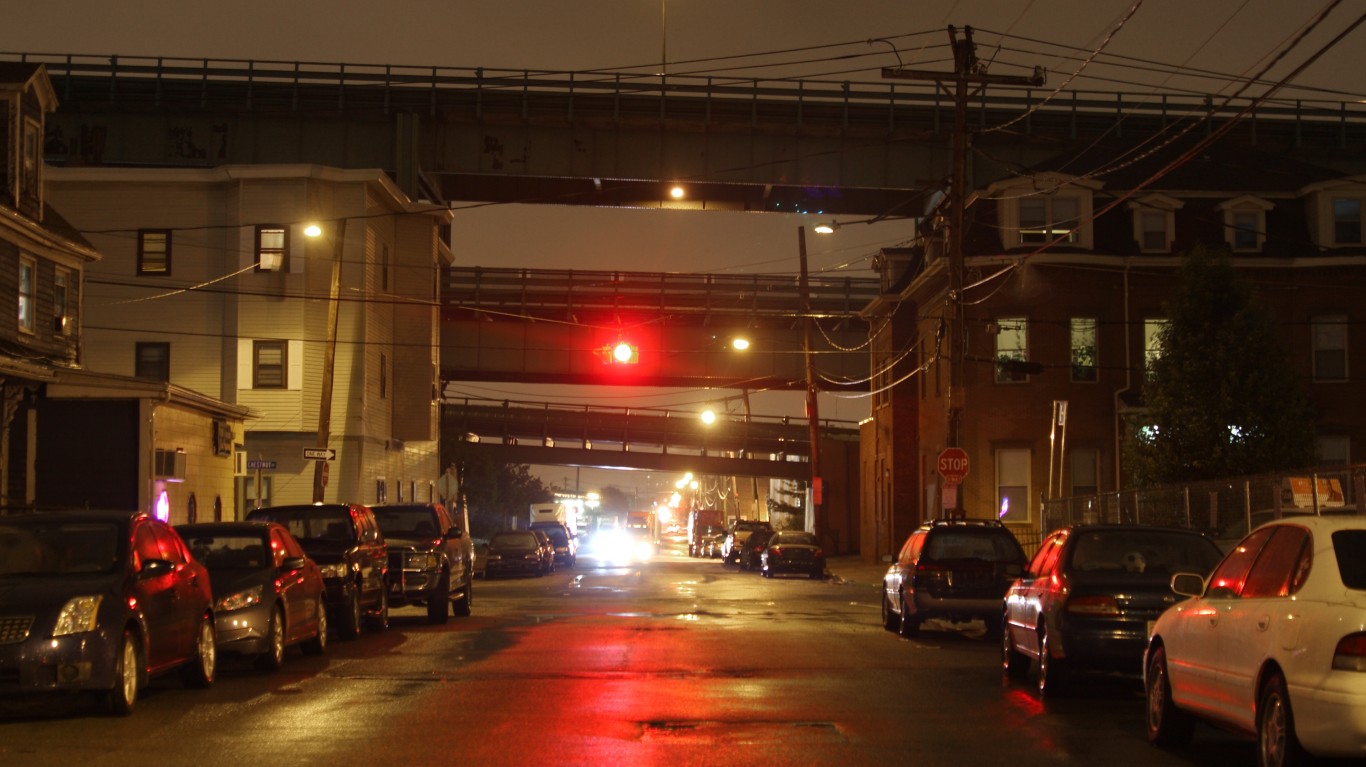
22. Chelsea, Massachusetts
> Population: 39,992
> 5-yr. population change: +7.8%
> Median household income: $56,802
> 5-yr. avg. unemployment: 4.7%
Chelsea, Massachusetts, is a densely populated city of about 40,000 located across the Mystic River from Boston. Area residents benefit from many of the advantages of a big city — but with more affordable housing. Residents have access to reliable public transportation, parks, employment opportunities, health care, as well as restaurants, bars, fitness centers, museums, and theatre companies. Meanwhile, the typical home in Chelsea is worth $350,800, compared to the median home value of $532,700 in nearby Boston.
Chelsea is growing far faster than most of the country. In the last five year, the local population expanded by 7.8%. Meanwhile, the U.S. population grew by just 3.4% over the same period.
[in-text-ad-2]
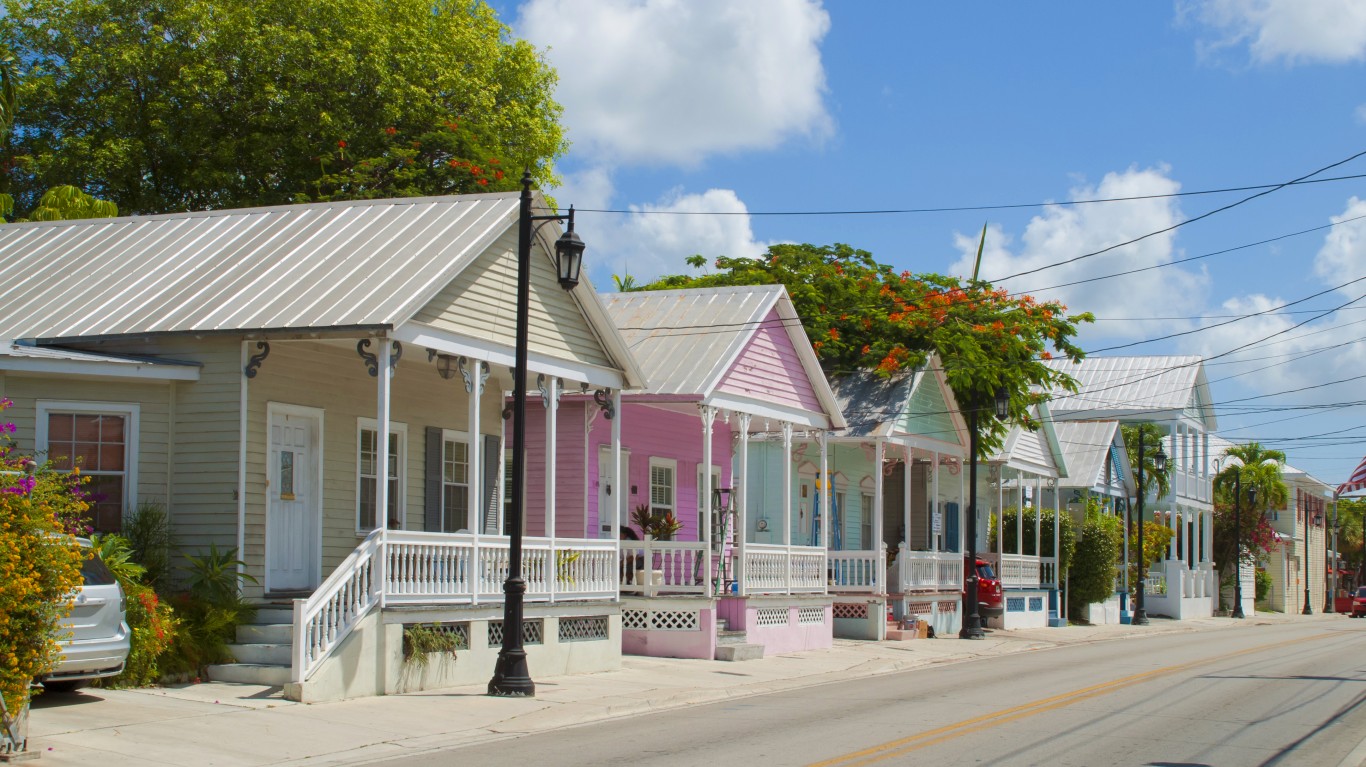
21. Key West, Florida
> Population: 24,843
> 5-yr. population change: -1.4%
> Median household income: $69,630
> 5-yr. avg. unemployment: 2.2%
Key West, the southernmost point in Florida, also ranks as the best place to live in the Sunshine State. Located at the very end of the Keys archipelago, Key West is relatively isolated and is over 150 miles from Miami, the nearest major city. Still, there appear to be sufficient employment opportunities on the island, as an average of just 2.2% of the labor force has been unemployed in the last five years, compared to 5.3% of the U.S. labor force.
Key West is steeped in history and culture. Home to Harry Truman’s Little White House, where he spent 175 days of his presidency, and the former home of Ernest Hemingway, the city has a far higher than average concentration of museums. The pedestrian-friendly city also has an active bar and nightlife scene as well as plenty of dining and shopping venues.
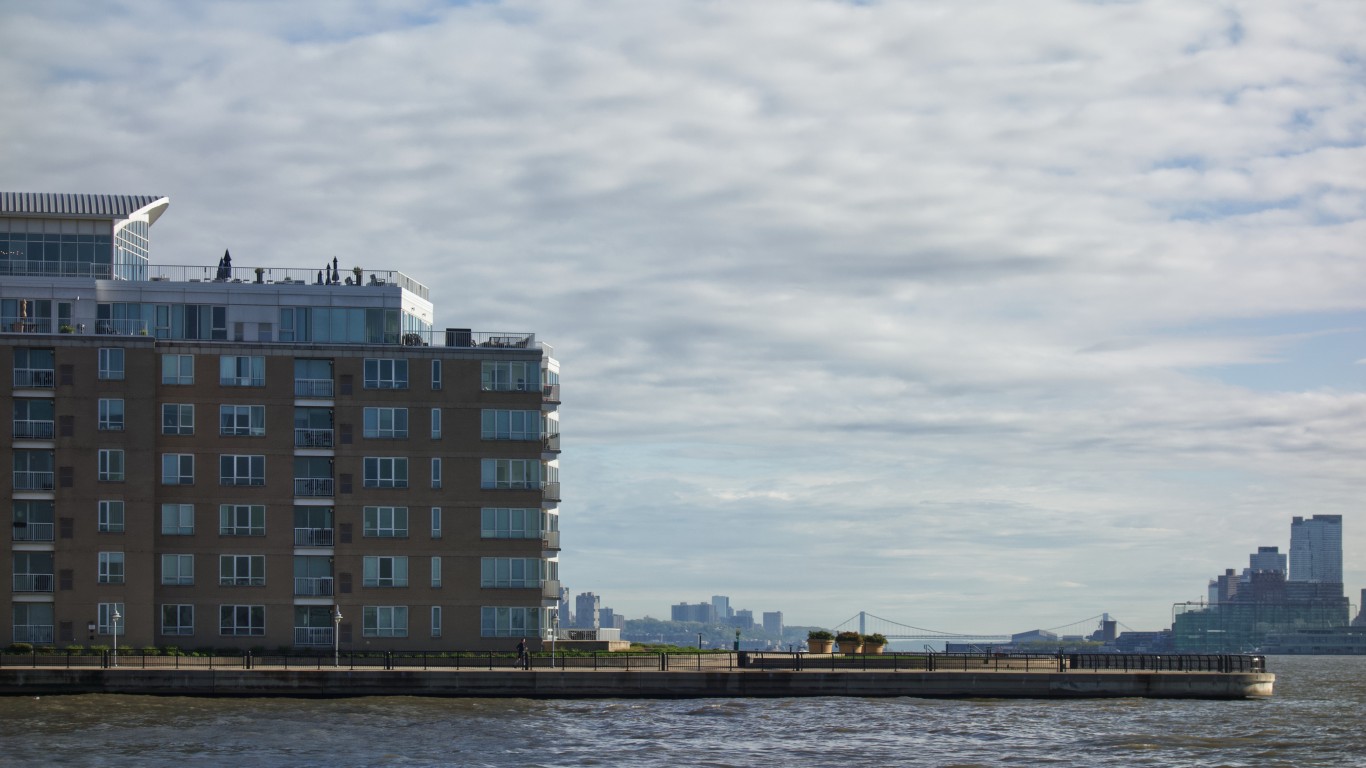
20. Union City, New Jersey
> Population: 68,226
> 5-yr. population change: +0.3%
> Median household income: $48,992
> 5-yr. avg. unemployment: 4.5%
Located on the west side of the lower Hudson River, Union City, New Jersey, is one of several communities within commuting distance of Manhattan to rank on this list. Despite its proximity to New York City it is far more affordable while offering residents many of the same benefits, including access to jobs, health care, entertainment, and reliable public transportation. Over 40% of workers in Union City commute using public transit compared to just 5% of American workers nationwide.
[in-text-ad]
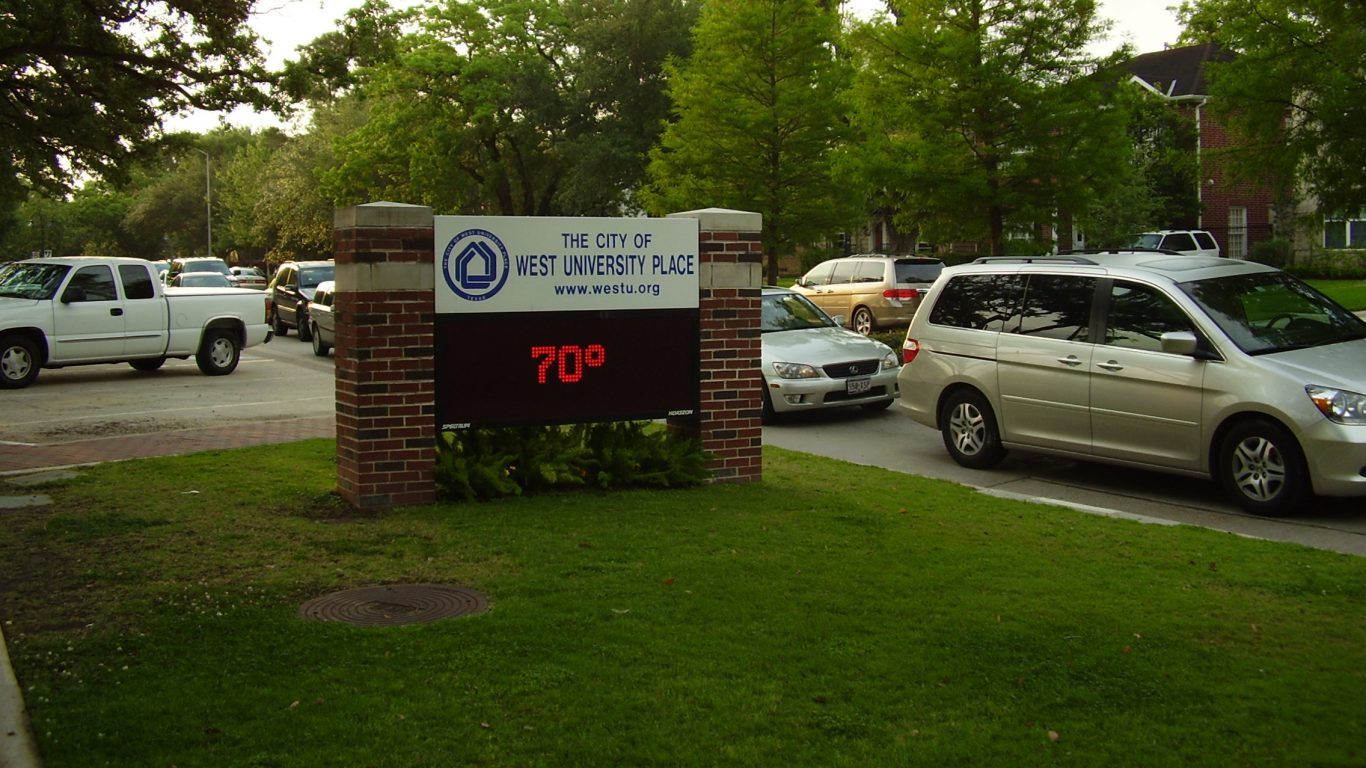
19. West University Place, Texas
> Population: 15,603
> 5-yr. population change: +2.5%
> Median household income: $250,000+
> 5-yr. avg. unemployment: 2.6%
The Houston suburb of West University Place is one of two places in Texas to rank on this list. A wealthy city, West University Place has a median household income of over a quarter of a million dollars. The average five year unemployment rate in the city stands at just 2.6%, less than half the comparable 5.3% national figure.
In close proximity to Houston, West University offers residents access to employment and entertainment in one of the largest American cities without some of the drawbacks of living in a large metropolis.
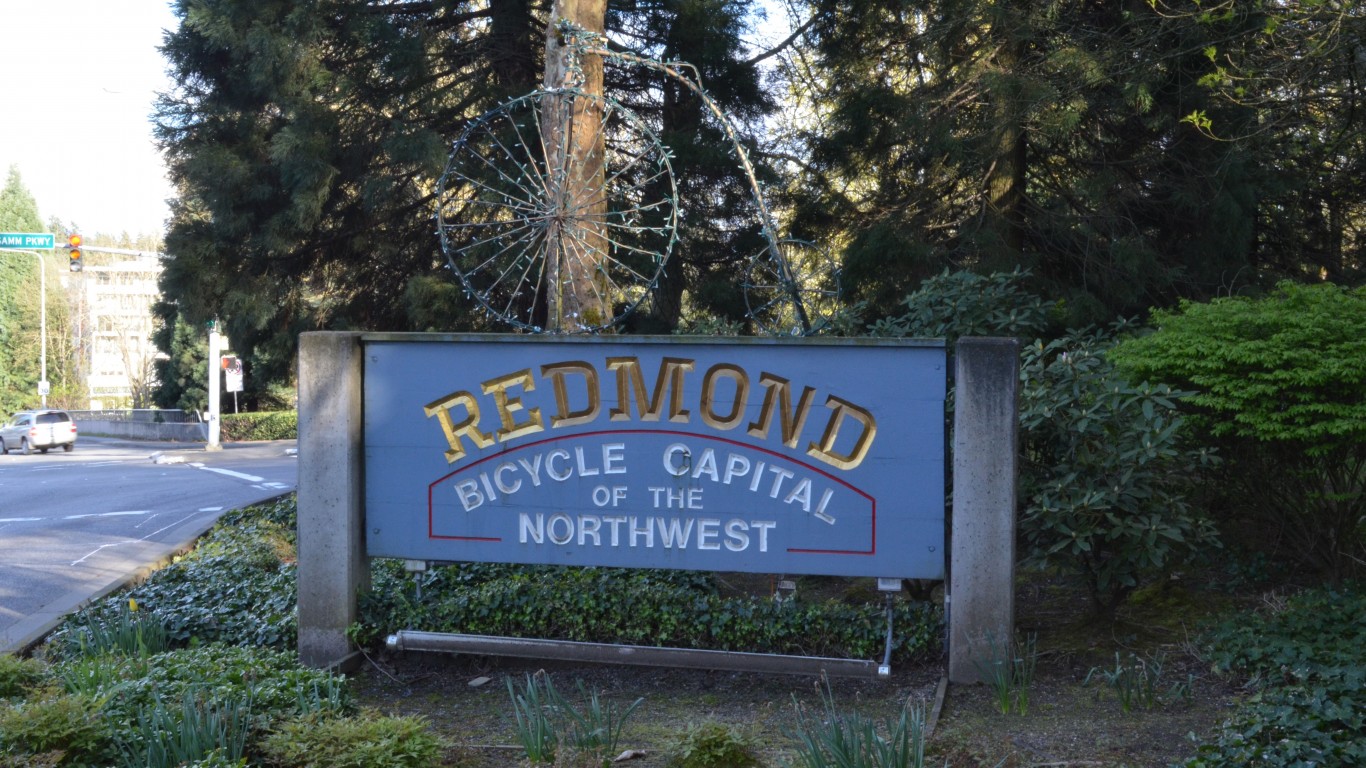
18. Redmond, Washington
> Population: 65,558
> 5-yr. population change: +15.6%
> Median household income: $132,188
> 5-yr. avg. unemployment: 3.5%
Redmond, a city of about 66,000 residents 15 miles northeast of Seattle, is the highest ranking city in Washington on this list. The city has several expansive parks, hiking trails, and over 110 shops, restaurants, and entertainment venues in a walkable downtown area. Redmond is also home to Microsoft and Nintendo of America — and the presence of these major employers may help explain why the city’s 3.5% five-year unemployment rate is well below the comparable 5.3% national average. In the last four years alone, employment has climbed by 17% in the city.
Redmond is proving to be a popular option for new residents and families. In the last half decade, the local population grew by 15.6% — more than four times the national population growth of 3.4% over the same period.
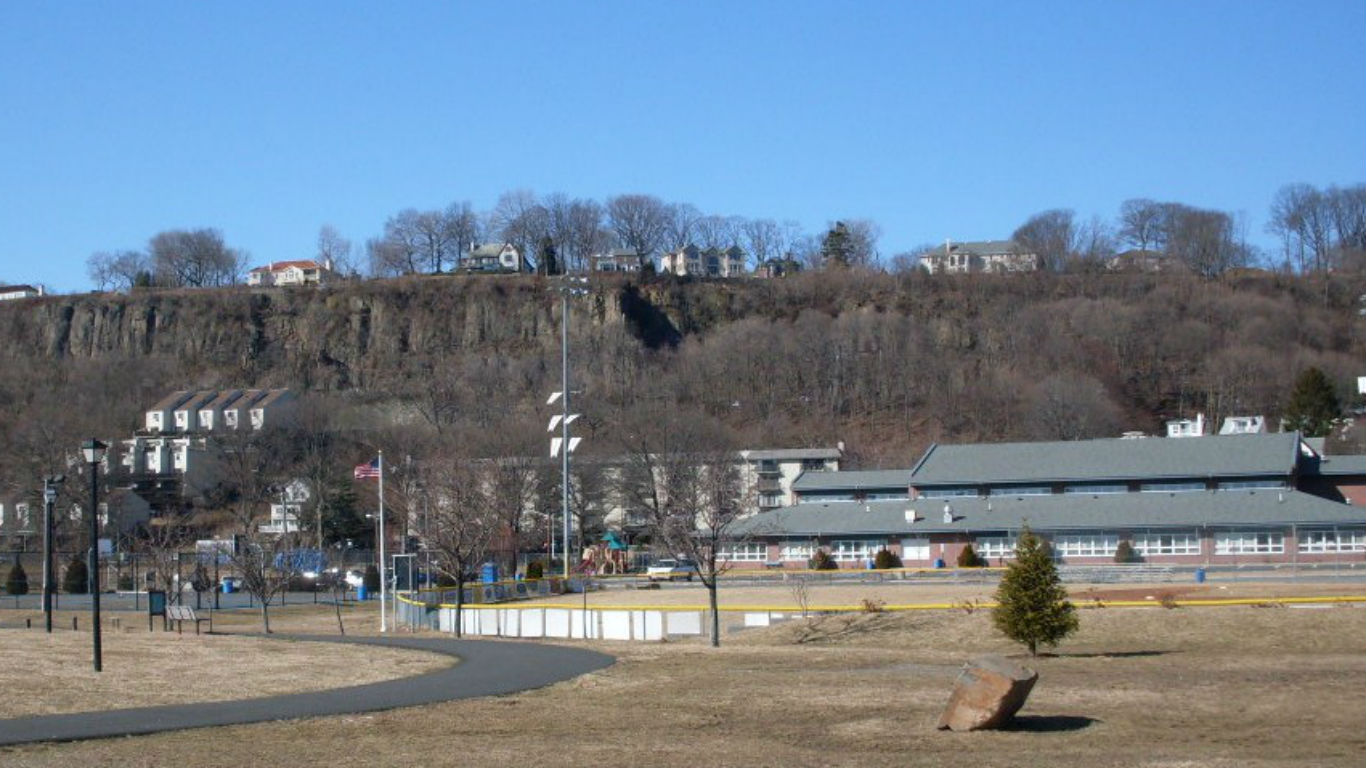
17. Edgewater, New Jersey
> Population: 12,403
> 5-yr. population change: +3.6%
> Median household income: $127,221
> 5-yr. avg. unemployment: 3.5%
Edgewater, New Jersey, located directly across the Hudson River from Manhattan’s Upper West Side and Harlem, is one of several places in the New York City metro area to rank on this list. Residents have access to jobs and culture in the nation’s largest city as well as reliable public transportation. Over the last five years, just 3.5% of Edgewater’s labor force was unemployed, compared to the national 5.3% average jobless rate. Also, 44.2% of commuters rely on public transportation, compared to 5.0% of commuters nationwide.
[in-text-ad-2]
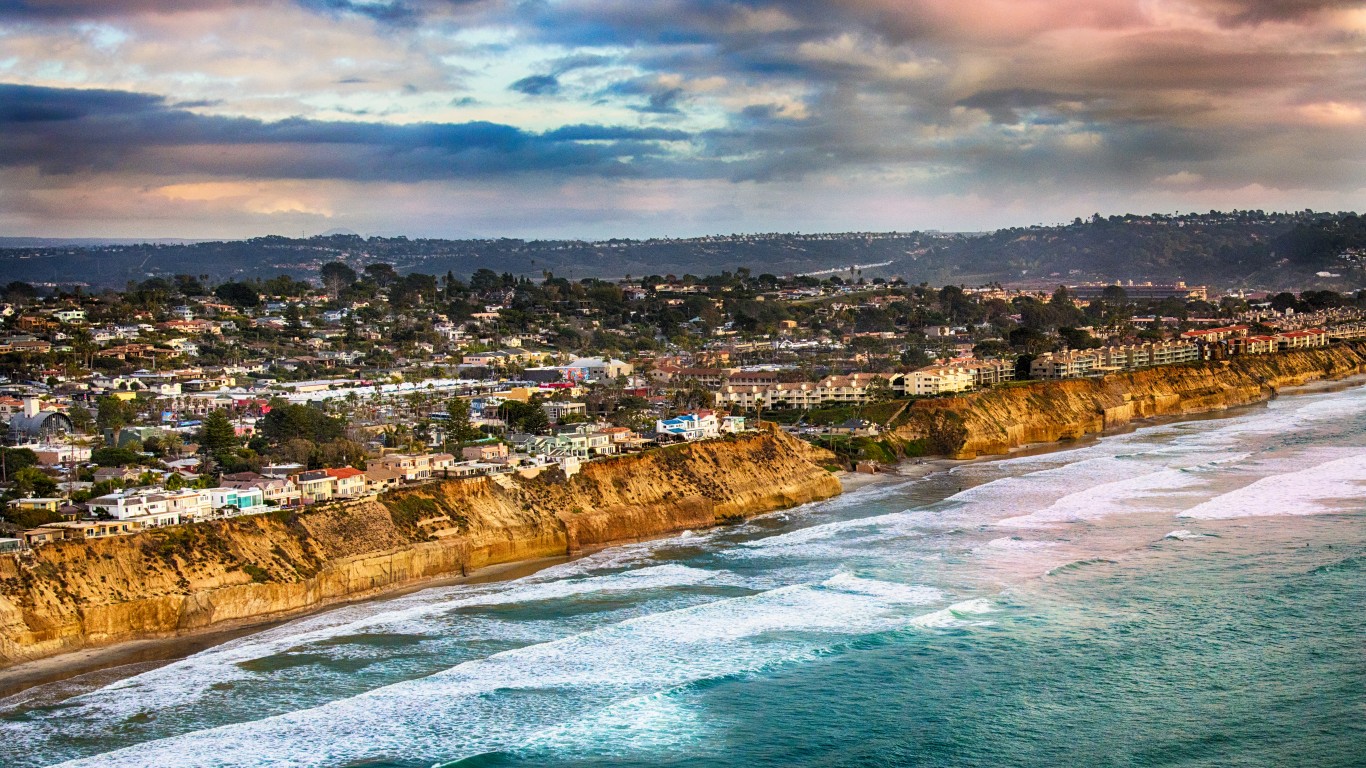
16. Solana Beach, California
> Population: 13,356
> 5-yr. population change: +1.6%
> Median household income: $108,118
> 5-yr. avg. unemployment: 3.2%
Solana Beach is one of several communities in coastal California to rank on this list. The city, located just 30 minutes from downtown San Diego, boasts nearly 2 miles of coastline and a warm climate to go with it. Downtown Solana Beach is walkable and offers residents a wide range of dining and shopping options.
Residents are willing to pay considerably for the area’s location and amenities as the typical area home is worth nearly $1.2 million. Incomes in the area are relatively high as well. Most households earn over $108,000 a year, far more than the national median household income of less than $63,000.
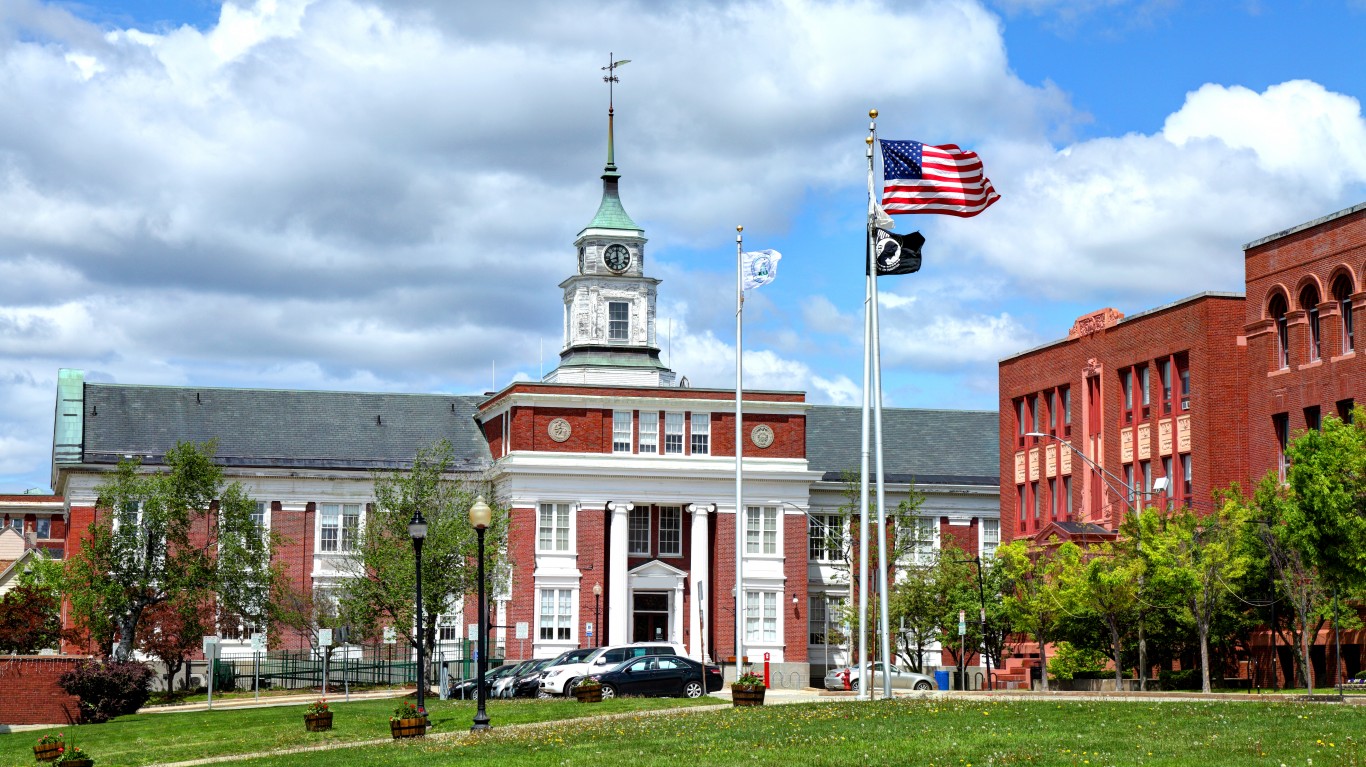
15. Somerville, Massachusetts
> Population: 80,906
> 5-yr. population change: +4.3%
> Median household income: $97,328
> 5-yr. avg. unemployment: 3.3%
The Boston metro area city of Somerville ranks as the best place to live in Massachusetts and the 15th best place to live nationwide. While most Americans have to rely solely on an automobile, Somerville residents benefit from living in a densely-populated metro area with reliable public transportation. More than one in three commuters in the area use public transit and one in nine walk, compared to 5.0% and 2.7% of commuters nationwide, respectively.
Somerville residents also have access to job opportunities in the largest metro area in New England, and partially as a result, an average of just 3.3% of the labor force has been unemployed in the last five years, compared to 5.3% of the total U.S. labor force.
[in-text-ad]
14. Summit, New Jersey
> Population: 21,913
> 5-yr. population change: +0.4%
> Median household income: $157,835
> 5-yr. avg. unemployment: 5.5%
The affluent New York City suburb of Summit, New Jersey, is one of several cities in the Garden State to rank on this list. The city has a walkable downtown area with plenty of shopping and dining options, and residents have access to public transportation to nearby Manhattan. About one-quarter of commuters in Summit use public transit — five times the national average.
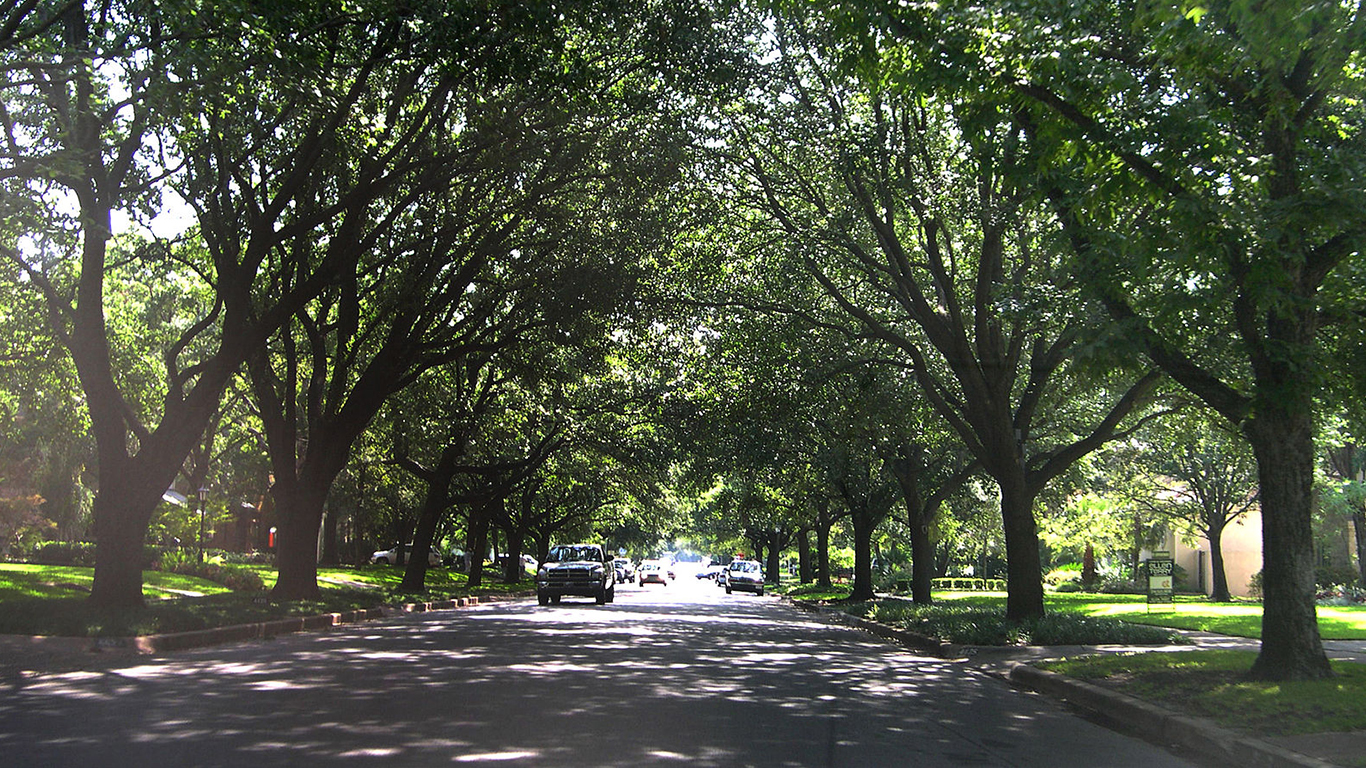
13. Highland Park, Texas
> Population: 9,168
> 5-yr. population change: +4.2%
> Median household income: $211,136
> 5-yr. avg. unemployment: 1.4%
The Dallas suburb of Highland Park ranks as the best place to live in Texas. One of the most affluent neighborhoods in the United States, most households in the town earn over $211,000 a year. The area’s high incomes are partially attributable to a strong job market, as an average of just 1.4% of the labor force has been unemployed in the last five years — a fraction of the comparable 5.3% national figure.
Residents of Highland Park have access to seven parks that include a swimming pool, tennis courts, and walking trails. The area is also home to the high-end Highland Park Village shopping center and the Dallas Country Club.
12. La Grange, Illinois
> Population: 15,545
> 5-yr. population change: -0.8%
> Median household income: $123,965
> 5-yr. avg. unemployment: 3.9%
The Chicago suburb of La Grange ranks as the best place to live in Illinois and the 12th best nationwide. In addition to easy access to the Windy City and all it has to offer, the 15,500 residents of the village have their own walkable downtown area complete with shopping, dining, and entertainment options.
Thanks in part to its close proximity to the largest city in the Midwest, La Grange residents are less likely to struggle to find work than most Americans. Over the last five years, an average of just 3.9% of the local labor force has been unemployed, compared to 5.3% of the U.S. labor force. Commuters in La Grange also have access to a range of transportation options, with about one in every five workers in the area using public transit — four times the national average.
[in-text-ad-2]
11. Lafayette, California
> Population: 26,305
> 5-yr. population change: +6.6%
> Median household income: $178,889
> 5-yr. avg. unemployment: 4.5%
Lafayette, California, is a city of about 26,000 located about 10 miles east of Berkeley. First settled in 1848 and incorporated in 1968, Lafayette now covers 15 square miles of rolling hillside and offers residents a semi-rural lifestyle with easy access to a major urban area. With its own Bay Area Rapid Transit station, Lafayette is just a 25 minute rail ride from San Francisco. The area is governed by a conservative fiscal policy, and partially as a result, residents pay an average of only 0.7% of their home value in real estate taxes annually, well below the 1.1% national average.
10. Port Washington, New York
> Population: 15,808
> 5-yr. population change: -0.2%
> Median household income: $141,667
> 5-yr. avg. unemployment: 2.2%
Port Washington is one of two communities in New York state on this list, and the only one on Long Island. Located on the North Shore, about an hour from Midtown Manhattan, Port Washington offers residents easy access to jobs in the largest metropolitan area in the country. This may partially explain why the five-year average unemployment rate in the area stands at just 2.2% — less than half the comparable 5.3% national figure. The town also has a walkable downtown area as well as parks and beaches.
[in-text-ad]
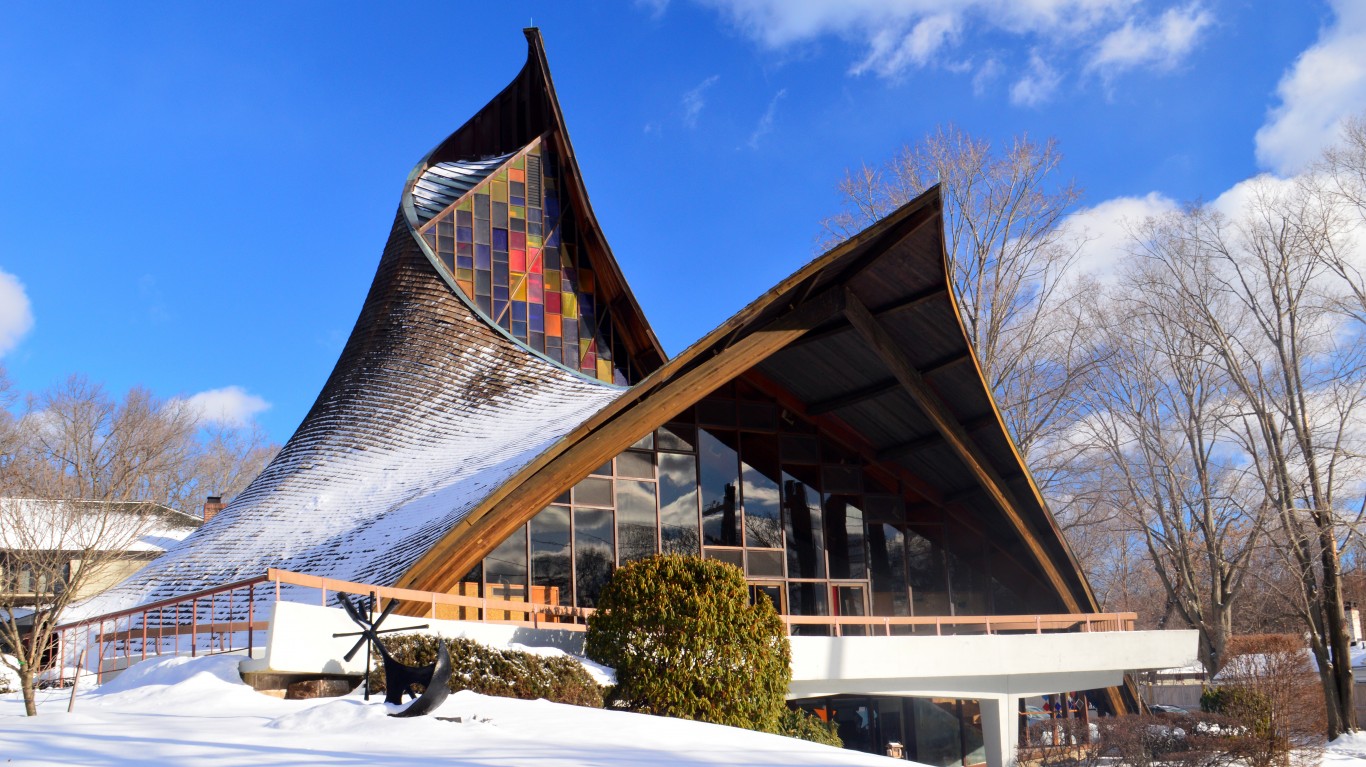
9. Darien, Connecticut
> Population: 21,742
> 5-yr. population change: +2.6%
> Median household income: $232,523
> 5-yr. avg. unemployment: 4.9%
Darien is the only place in Connecticut to rank on this list but one of several places located within commuting distance of New York City. Located about an hour’s drive from Midtown Manhattan, Darien offers residents easy access to jobs, culture, and entertainment in the largest city in the United States. The town itself has a walkable downtown area and several parks and beaches along Long Island Sound.
Largely due to its location and amenities it offers, Darien is one of the most expensive places to live in the country. The typical area home is worth about $1.5 million. Still, for many residents, high housing costs are offset partially by higher than average incomes. Most Darien households earn over $230,000 a year, nearly four times the median household income nationwide.

8. Paradise Valley, Arizona
> Population: 14,362
> 5-yr. population change: +8.4%
> Median household income: $211,393
> 5-yr. avg. unemployment: 2.1%
Paradise Valley ranks as the best place to live in Arizona and one of the best nationwide. The town is home to several resorts and a number of golf courses. Located just north of Phoenix and Scottsdale, it is also known for its high-end dining and nightlife.
The area also has a strong job market. An average of just 2.1% of Paradise Valley’s labor force was unemployed in the last five years, less than half the comparable 5.3% national jobless figure. Like several other places on this list, Paradise Valley is growing rapidly. In the last half decade, the local population has grown by 8.4% — more than double the national population growth of 3.4% over the same period.
7. Tiburon, California
> Population: 9,144
> 5-yr. population change: +0.5%
> Median household income: $154,915
> 5-yr. avg. unemployment: 2.7%
Tiburon, California — located on a peninsula on the north side of the Golden Gate Bridge — is one of several places in the state located in the San Francisco Bay area to rank on this list. Residents have access to nearby San Francisco, both by the bridge and by ferry. The city also has its own downtown area with shopping, dining, and views of the bay.
As is often the case in the places on this list, Tiburon has a wealthy and well-educated population. Most area households earn at least $154,000 a year, and over three-quarters of adults have a bachelor’s degree or higher. For context, nationwide, most households earn less than $63,000, and fewer than one in every three adults have a bachelor’s degree.
[in-text-ad-2]
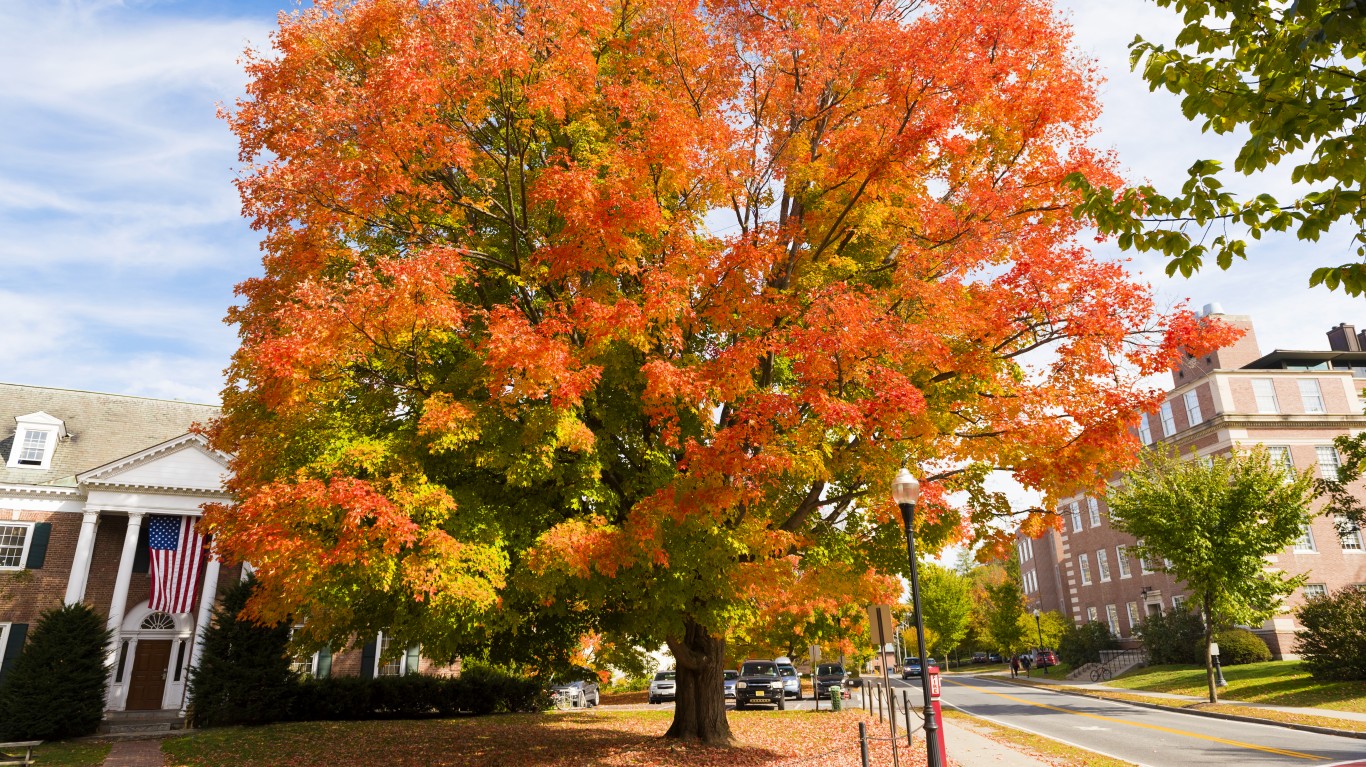
6. Hanover, New Hampshire
> Population: 8,508
> 5-yr. population change: +1.2%
> Median household income: $109,514
> 5-yr. avg. unemployment: 3.0%
Hanover, New Hampshire, located along the Connecticut River, ranks as the best place to live in the United States outside of California. Home to Dartmouth College, Hanover is a college town and has a high concentration of places like restaurants, hotels, fitness centers, golf courses, parks, museums, libraries, and theatre companies. Outdoor enthusiasts in Hanover have access to ski mountains and hiking trails in the area.
Despite being far out of commuting distance from a major urban area, Hanover has a relatively strong job market, with just 3.0% unemployment over the last five years.
5. Piedmont, California
> Population: 11,317
> 5-yr. population change: +3.3%
> Median household income: $224,659
> 5-yr. avg. unemployment: 3.9%
Piedmont is a small city of less than 12,000 located in California’s San Francisco Bay area. Located within a major metropolitan area, Piedmont offers residents a wide range of public transit options. Of all those who commute to jobs in nearby Oakland, San Francisco, or elsewhere, over 15% use public transit — more than three times the national average. Jobs in the area are widely available, as an average of just 3.9% of the labor force has been out of work in the last five years, well below the comparable 5.3% national unemployment figure.
As is typically the case in the California cities on this list, living in Piedmont is not cheap as most homes in the area are worth over $2 million.
[in-text-ad]
4. Newport Beach, California
> Population: 85,694
> 5-yr. population change: -1.0%
> Median household income: $127,223
> 5-yr. avg. unemployment: 3.1%
Newport Beach is a city of just over 85,000 residents in southern California along the Pacific Coast. The city is made up of 10 neighborhoods, a walkable downtown, 10 miles of coastline, dozens of parks, and more than 450 restaurants and shopping establishments,
Many of the best places to live are expensive, and Newport Beach is no different. It is one of the least affordable places to live in the country. The typical area home is worth $1.9 million, about 15 times more than the area’s median income of $127,223. Nationwide, the typical home is worth just 3.5 times more than the median household income.

3. Hillsborough, California
> Population: 11,447
> 5-yr. population change: +2.7%
> Median household income: $250,000+
> 5-yr. avg. unemployment: 3.0%
Hillsborough, a town in San Mateo County, California, ranks as the third best place to live in both the state and the nation as a whole. One of the wealthiest places in the country, most households earn over a quarter of a million dollars per year. Located not far from Palo Alto — one of only two cities that ranks higher than Hillsborough on this list — residents of Hillsborough have access to high-paying jobs in the area’s thriving tech industry. Over the last five years, an average of only 3.0% of the labor force in Hillsborough has been unemployed, well below the comparable 5.3% national figure.
Hillsborough is also located less than 20 miles from downtown San Francisco, affording residents access to everything one of the most cosmopolitan cities in the country has to offer. Hillsborogh itself offers adult recreation classes and a high per capita concentration of places like restaurants, gyms, and fitness centers.
2. Manhattan Beach, California
> Population: 35,500
> 5-yr. population change: -0.1%
> Median household income: $153,023
> 5-yr. avg. unemployment: 5.1%
Manhattan Beach is a small city located just south of Los Angeles along the Pacific Coast. Residents have access to 2 miles of beach front for fishing, surfing, and swimming. The walkable downtown area also features more than 150 retailers, 50 restaurants, and a weekly farmer’s market.
Residents of Manhattan Beach tend to be wealthy and well educated. Most area households earn over $150,000 a year, and three in every four adults in the city have a bachelor’s degree.
[in-text-ad-2]

1. Palo Alto, California
> Population: 66,573
> 5-yr. population change: +0.9%
> Median household income: $158,271
> 5-yr. avg. unemployment: 3.2%
Palo Alto, located in the heart of Silicon Valley, ranks as the best city to live in the United States. The city Palo Alto and the surrounding area are home to a high concentration of tech companies including giants such as Facebook and Google as well as startup.s — and jJobs in the area tend to by high paying, as most households in the city earn over $158,000 a year, and about 40% of households earn over $200,000. Partially because the area has become a tech industry hub, unemployment is low, averaging about 3.2% over the last five years, well below the comparable 5.3% national figurerate.
Methodology
To identify the best cities to live in, 24/7 Wall St. created a weighted index of 25 measures that fall into one of four categories: affordability, economy, quality of life, and community.
In the affordability category, the ratio of the median home value to the median income — the housing affordability ratio — was given full weight. More affordable cities were ranked higher. Property taxes, which also affect housing affordability, are largely levied at the local level, and cities where residents pay more in property taxes as a percentage of their home value were penalized. Property taxes were given a one-quarter weighting.
In the economy category, the unemployment rate was given a full weight. We used five-year average unemployment due to lack of comparable annual data at local levels. Five-year employment growth was given full weight, and the share of the total working-age population with a job — labor force participation — was given a half weight, favoring areas with greater employment and growing job opportunities.
The quality of life category includes several socioeconomic and health-related measures. The poverty rate was given a full weight, penalizing cities where poverty is more common. The share of the population that struggles to put food on the table due to distance from a grocery store, known as the food insecurity rate, was given full weight. A city’s mortality rate, calculated as the number of people who died while in hospital care per hospital by city, was also given full weight. In cases where city-level data was not available, mortality rates were imputed from county level data.
The drug overdose mortality rate was given a one-half weighting. The hospital readmission rate — the share of those who were released from the hospital and readmitted within 30 days — was given a one-fourth weight. Distance from the center of the city to the nearest hospital was given half weight.
The number of hospitalizations that would have been prevented by regularly-scheduled doctor visits for every 1,000 Medicare enrollees — known as the preventable hospitalization rate — was given half weighting.
Measures used in the community category include the average travel time to work, which was given full weight. The violent crime rate — the total number of rapes, robberies, murders, and aggravated assaults per 100,000 residents per year— was given full weight. So, too, was the property crime rate, which is the total number of burglaries, larcenies, motor vehicle thefts, and incidents of arson per 100,000 residents per year.
The share of commuters either walking, cycling, or taking public transit to work was given half weight. The total number of restaurants, bars, museums, theater companies, movie theaters, libraries, and parks per capita were each given a one-quarter weighting.
To avoid geographic clustering, we only listed the top-ranking city in a given county. Our list includes cities, towns, villages, boroughs, and Census designated places. We did not include places with fewer than 8,000 residents in our analysis.
Median household income, median home value, average travel time to work, poverty rate, population, employment-to-population ratio, median property taxes paid, and average unemployment rate are all five-year estimates from the U.S. Census Bureau’s American Community Survey for the 2015-2019 period.
The population-adjusted number of entertainment and cultural venues like restaurants and museums comes from the Census Bureau’s County Business Patterns data set and is for 2018.
Violent and property crime rates are from the FBI’s 2019 Uniform Crime Report. Drug overdose mortality rates are from the Centers for Disease Control and Prevention and are for the years 2016 to 2018. Mortality rates and hospital readmission rates are from the Centers for Medicare and Medicaid Services and are as of June 2019. Preventable hospitalizations are from the latest release of County Health Rankings & Roadmaps, a Robert Wood Johnson Foundation and University of Wisconsin Population Health Institute joint program.
The Average American Is Losing Momentum On Their Savings Every Day (Sponsor)
If you’re like many Americans and keep your money ‘safe’ in a checking or savings account, think again. The average yield on a savings account is a paltry .4%1 today. Checking accounts are even worse.
But there is good news. To win qualified customers, some accounts are paying more than 7x the national average. That’s an incredible way to keep your money safe and earn more at the same time. Our top pick for high yield savings accounts includes other benefits as well. You can earn a $200 bonus and up to 7X the national average with qualifying deposits. Terms apply. Member, FDIC.
Click here to see how much more you could be earning on your savings today. It takes just a few minutes to open an account to make your money work for you.
Thank you for reading! Have some feedback for us?
Contact the 24/7 Wall St. editorial team.
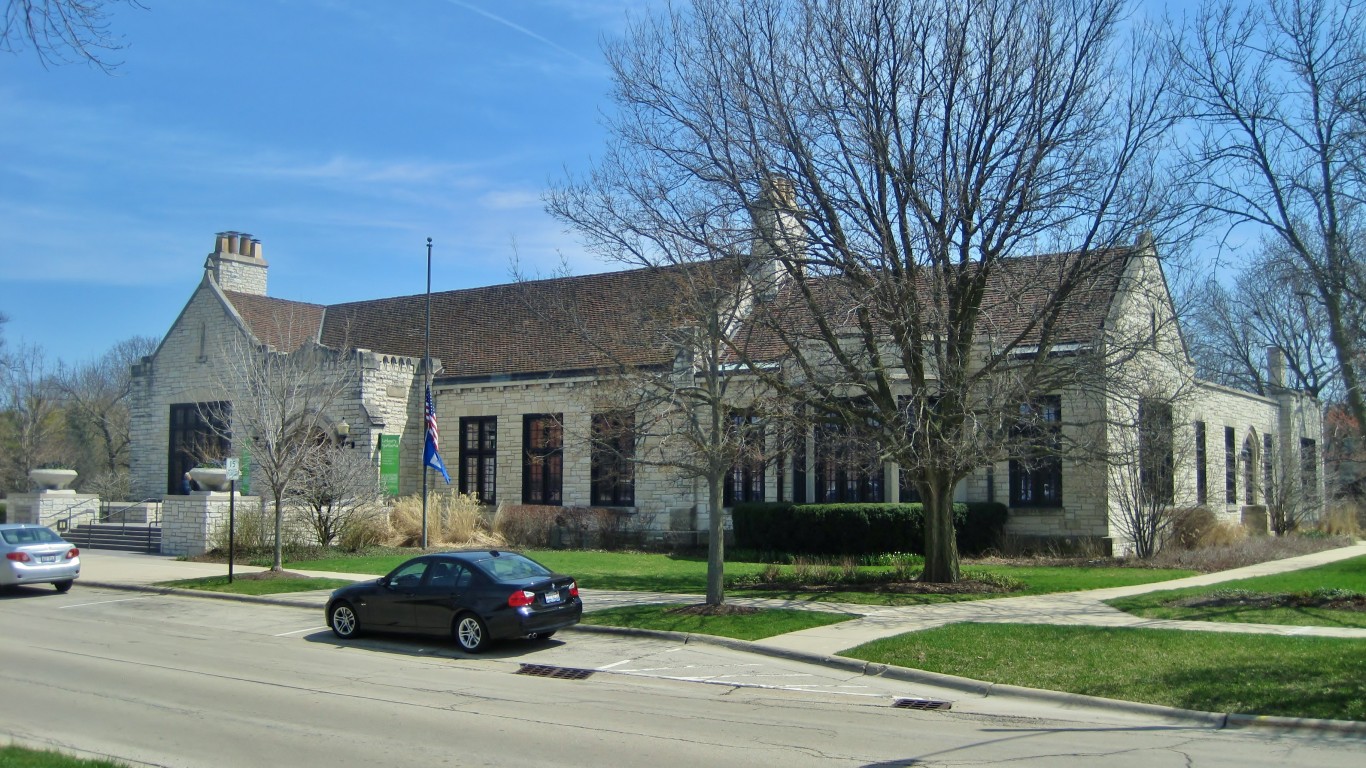
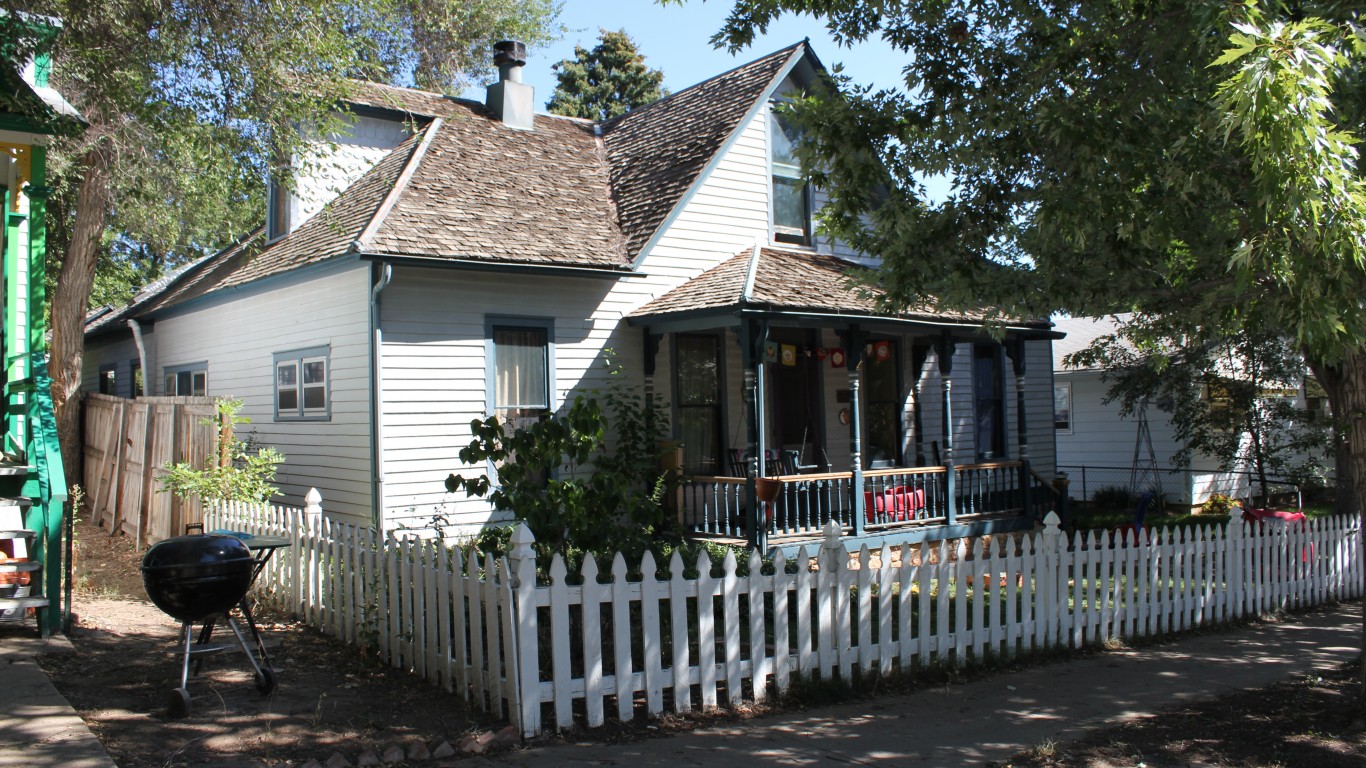
 24/7 Wall St.
24/7 Wall St.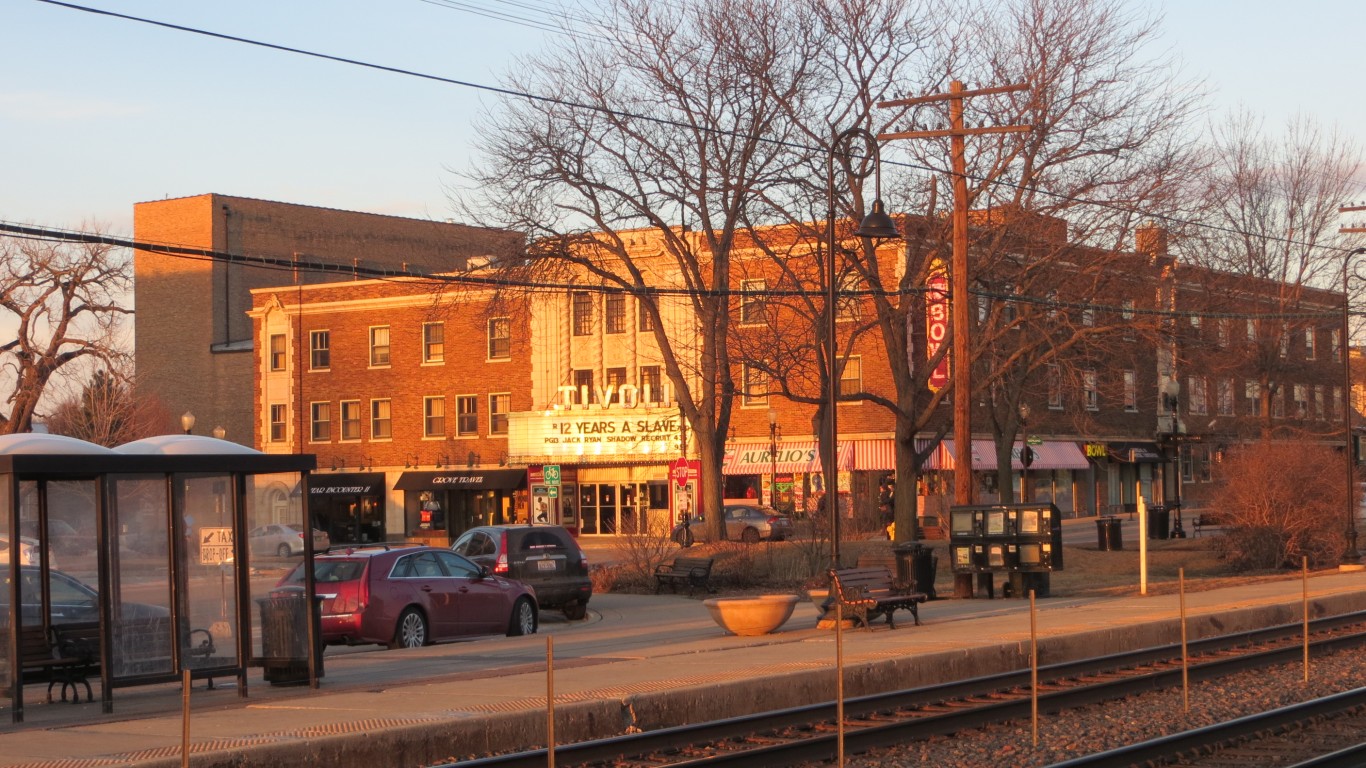
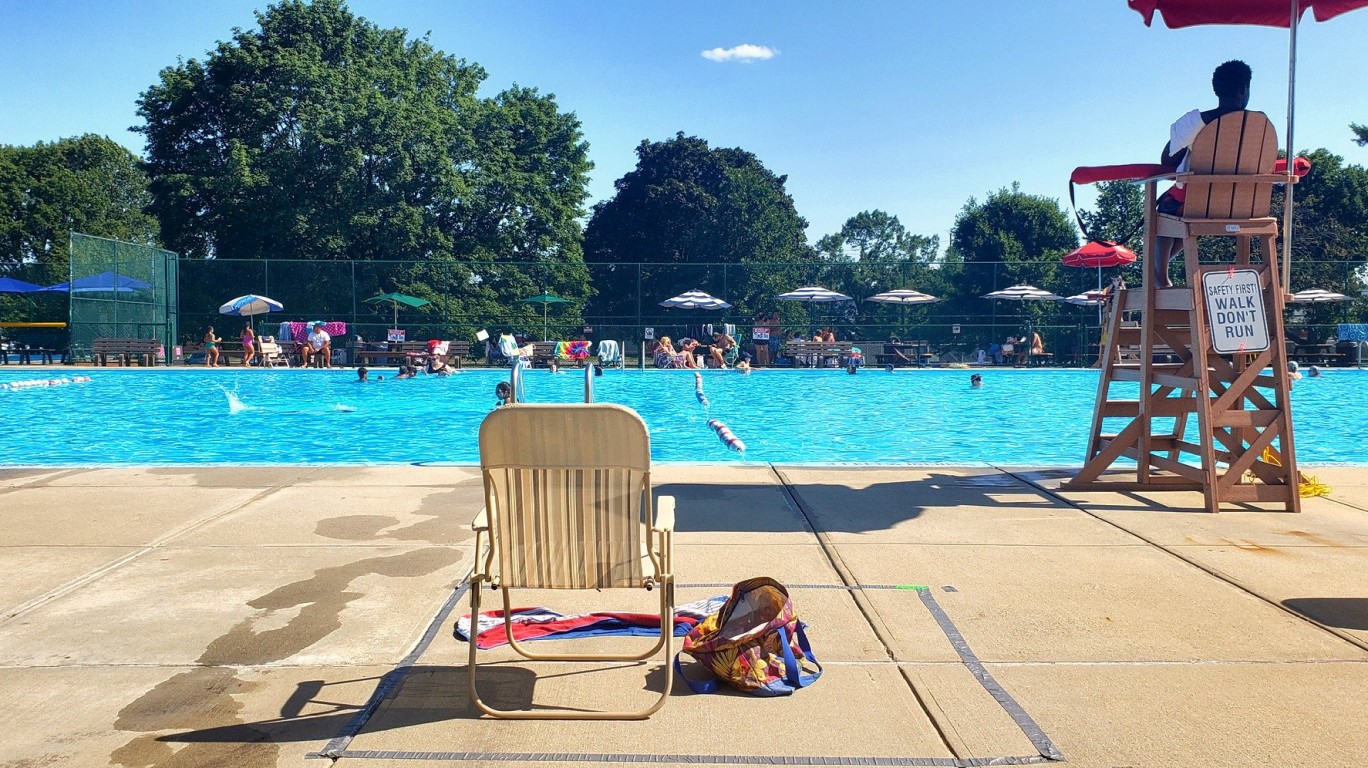
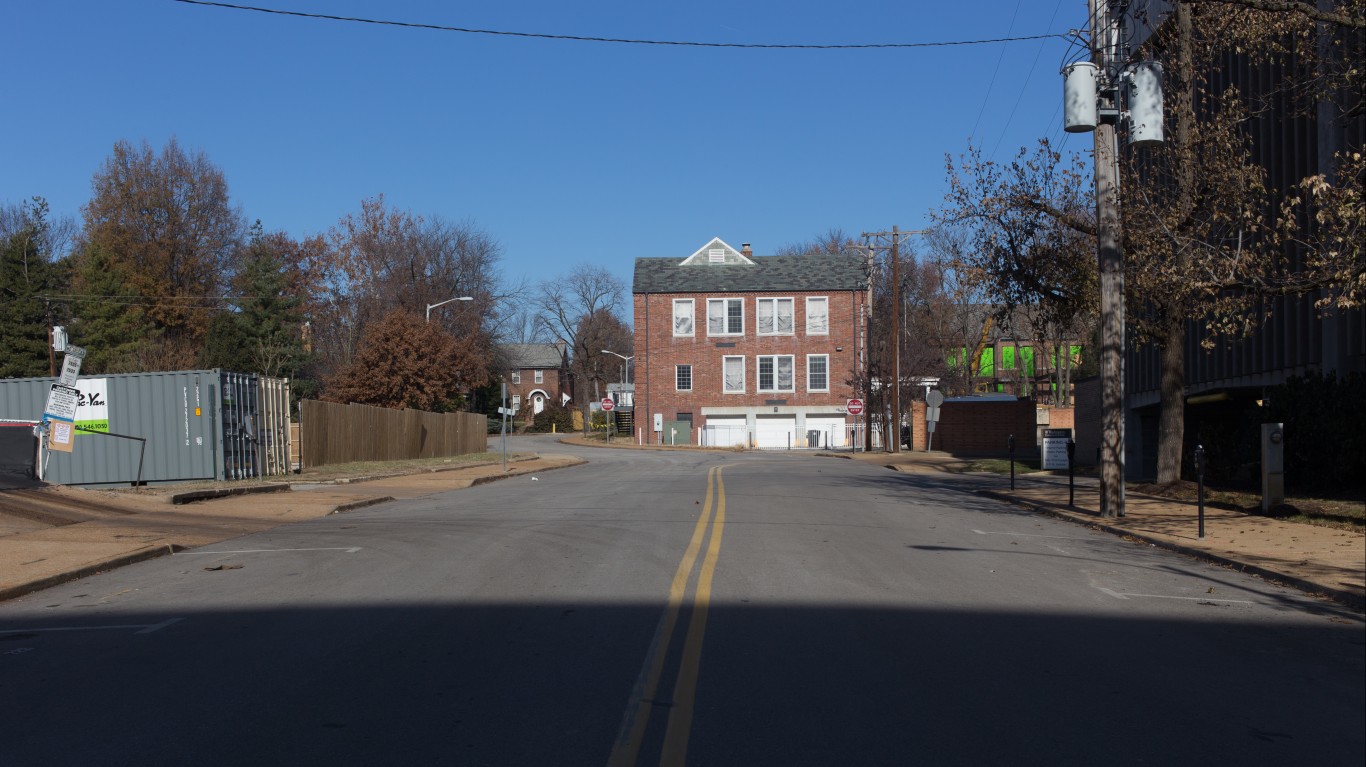
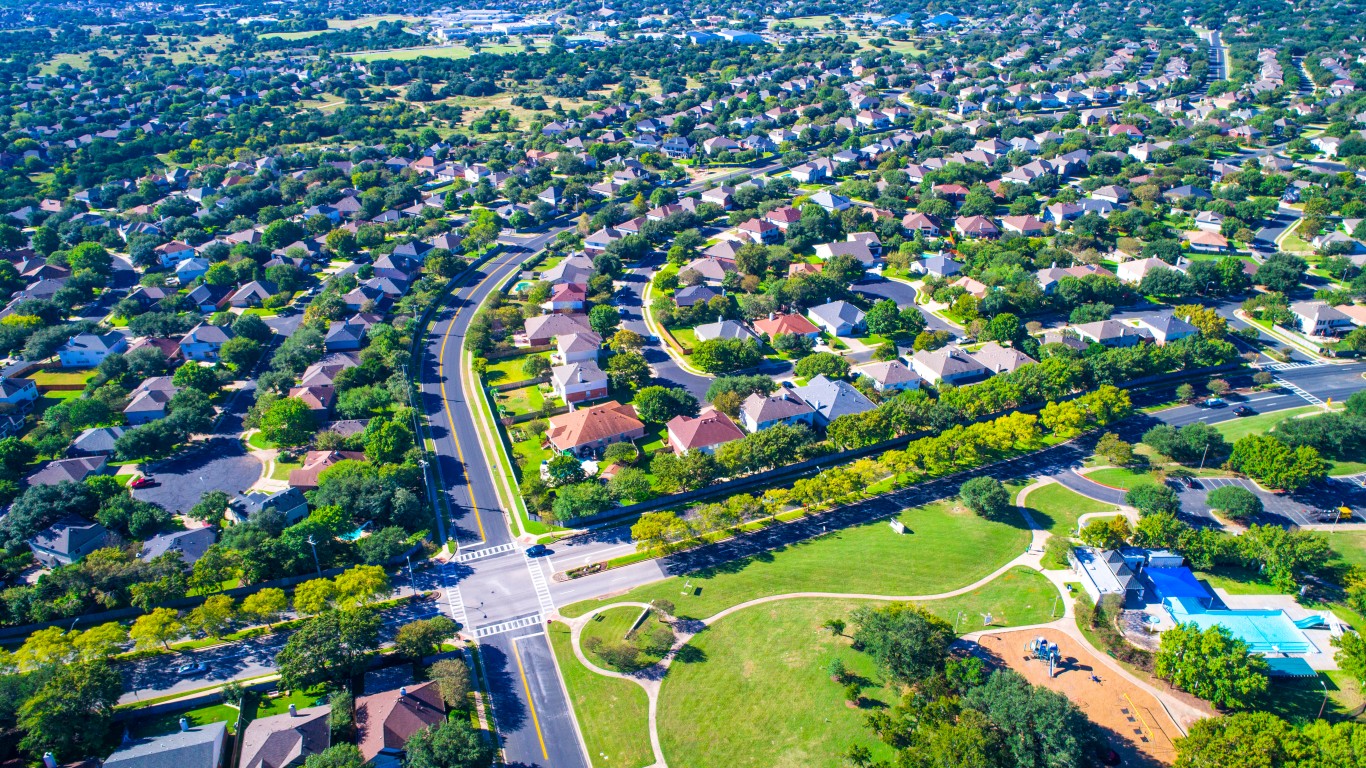 24/7 Wall St.
24/7 Wall St.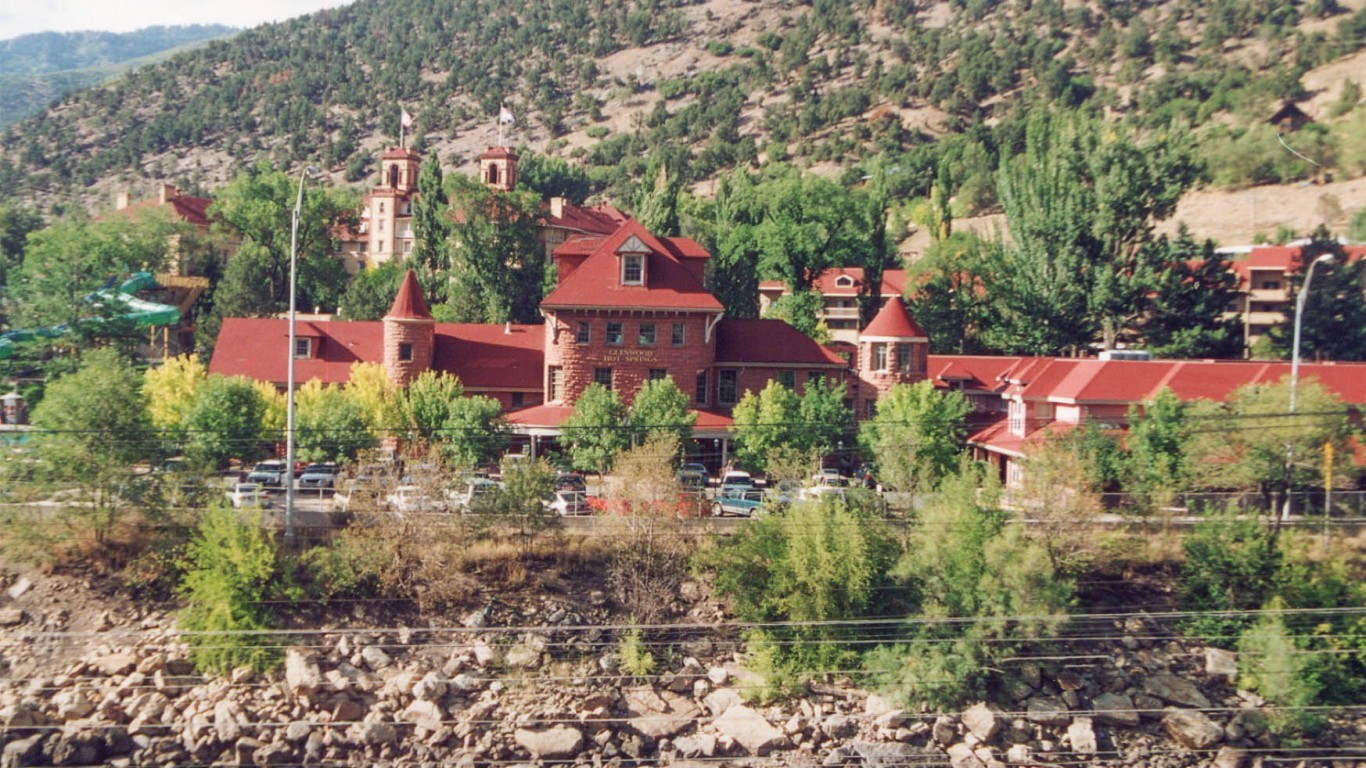
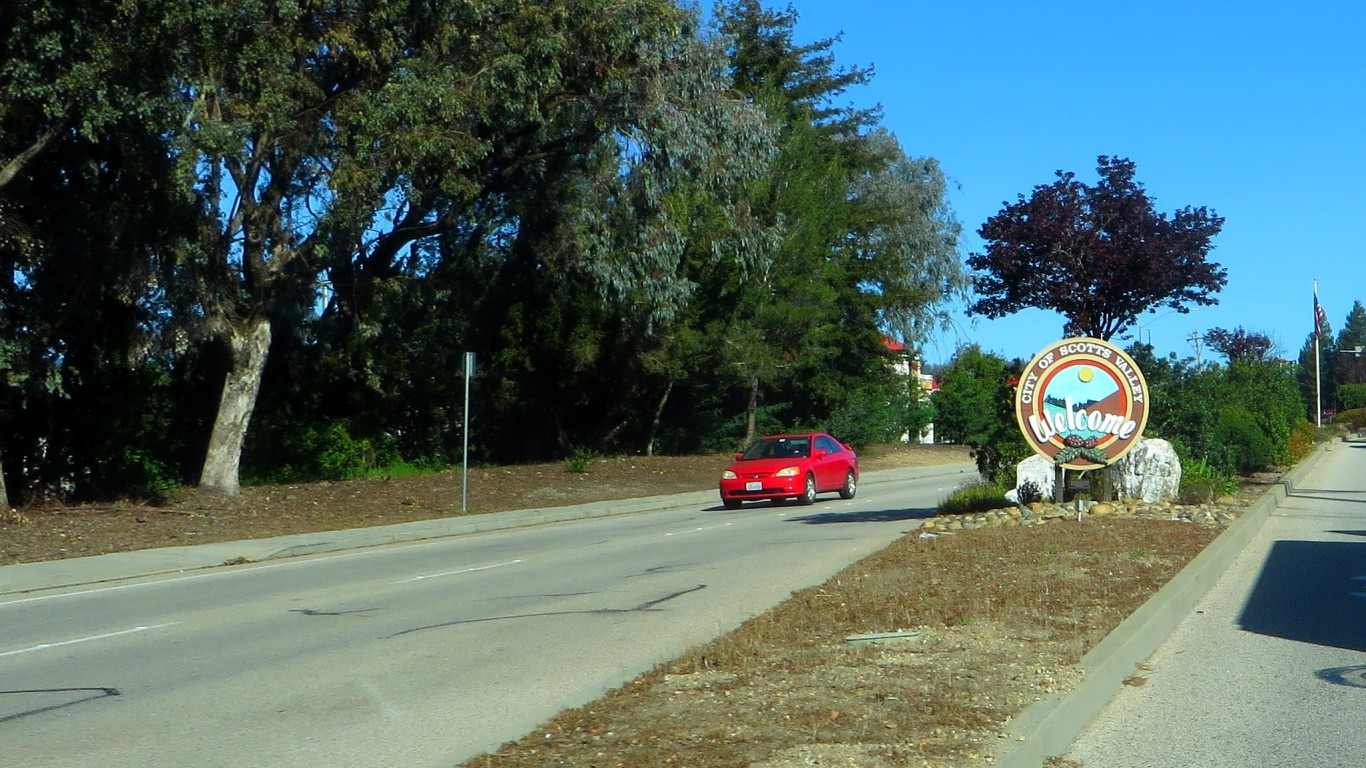
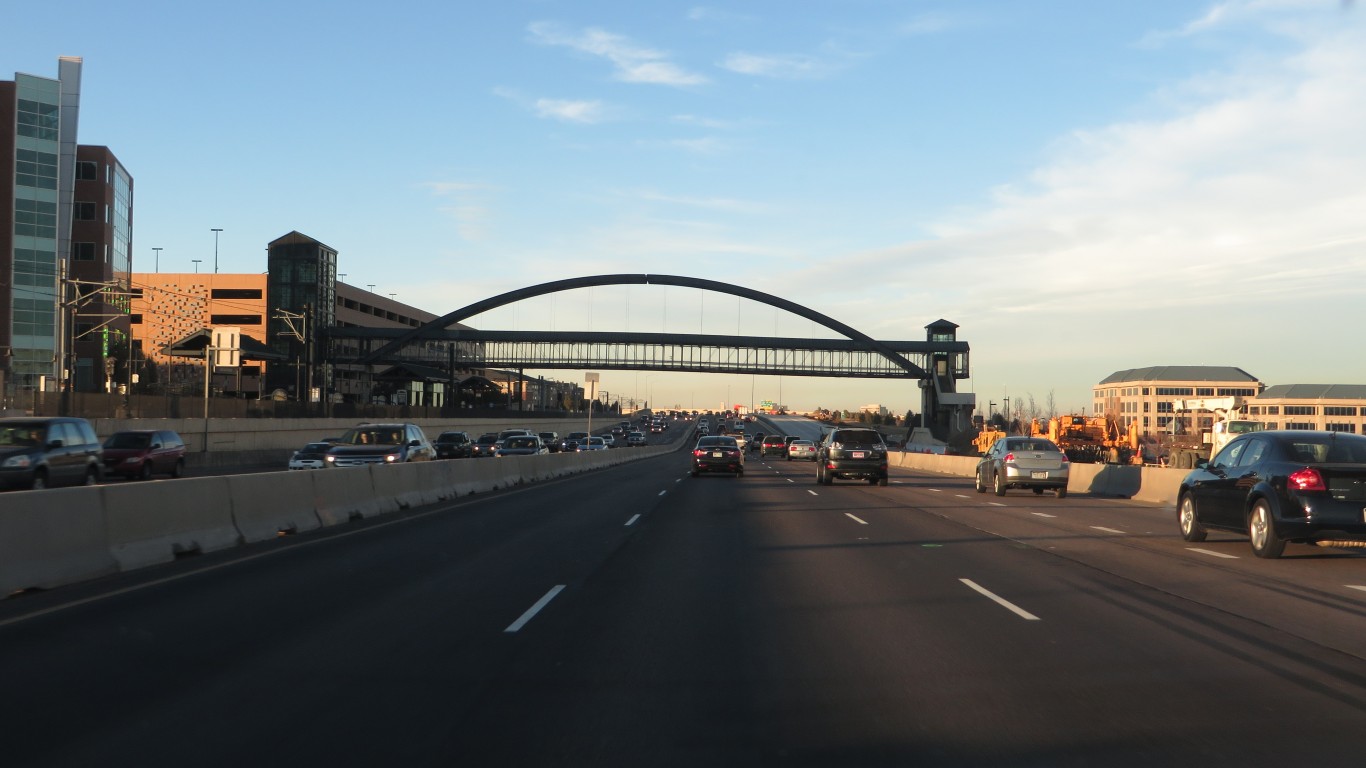
 24/7 Wall St.
24/7 Wall St.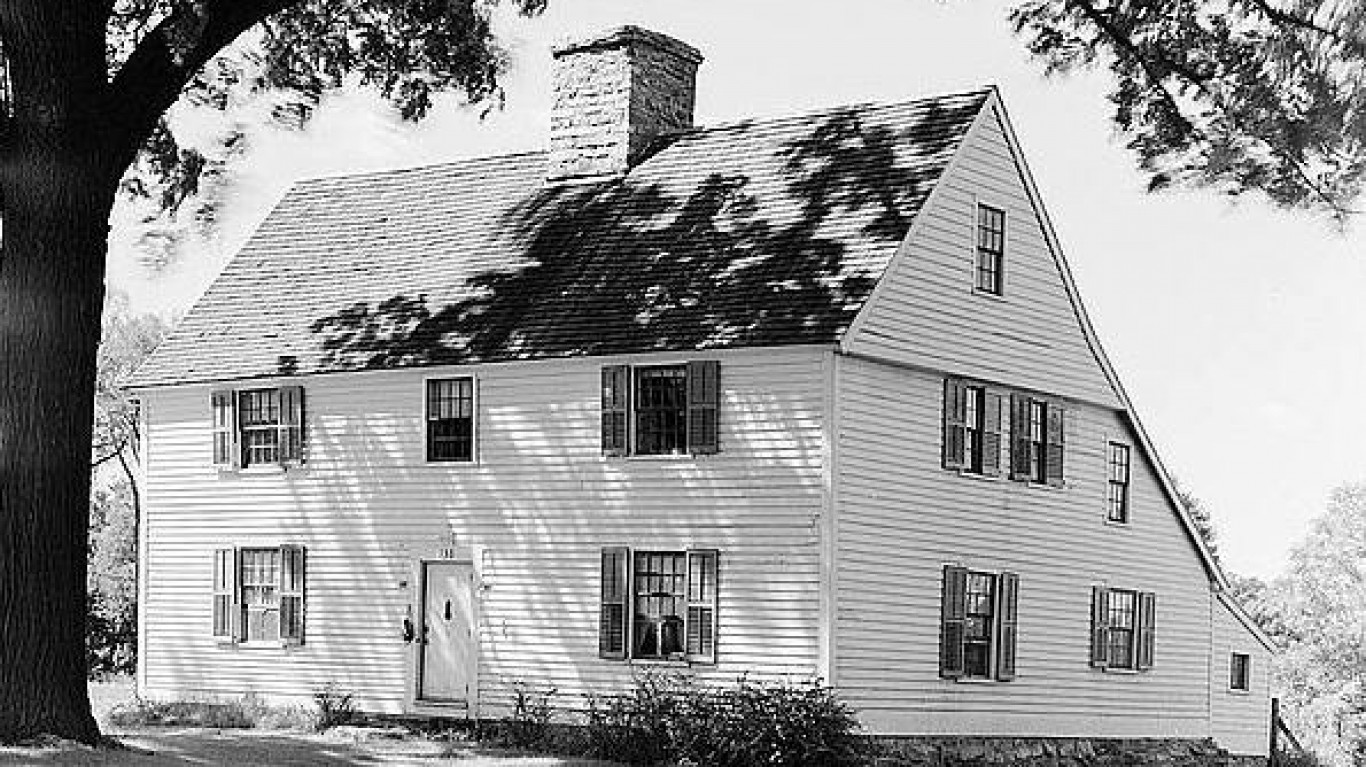 24/7 Wall St.
24/7 Wall St.